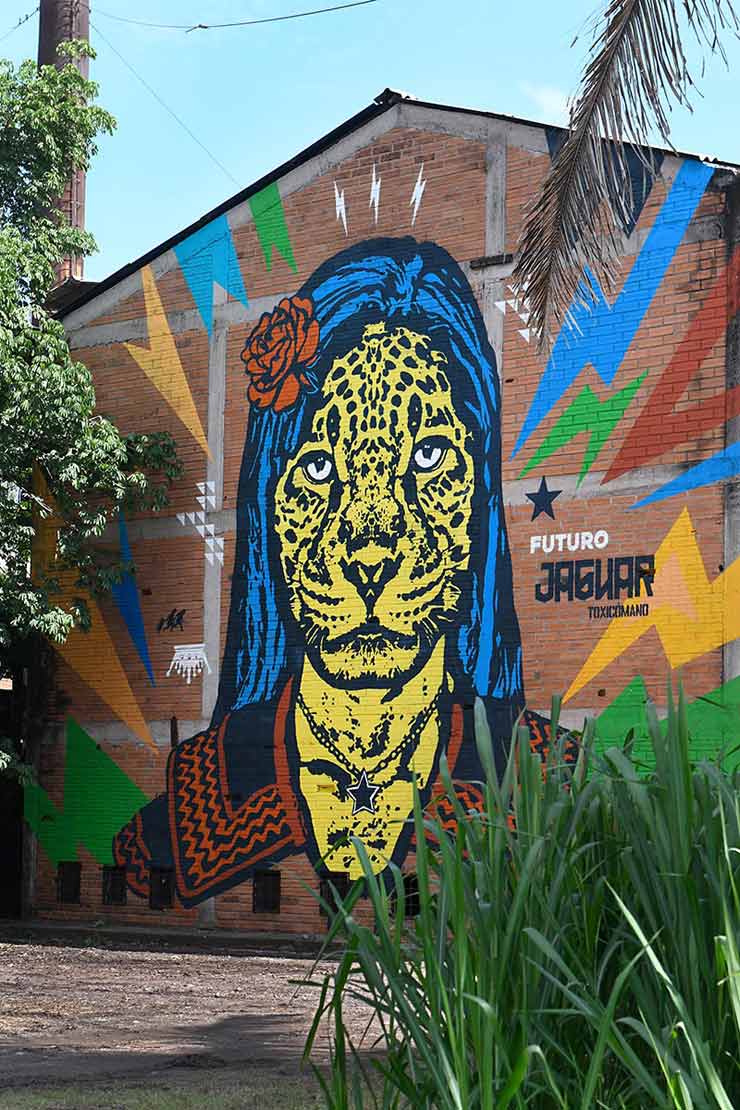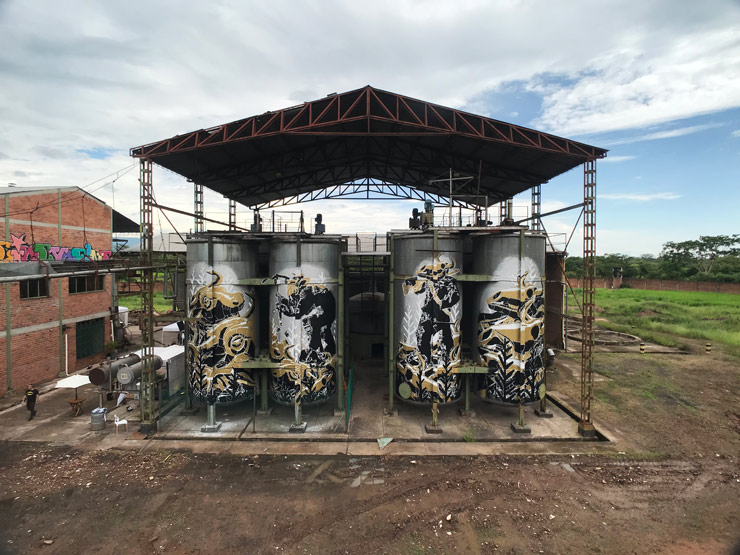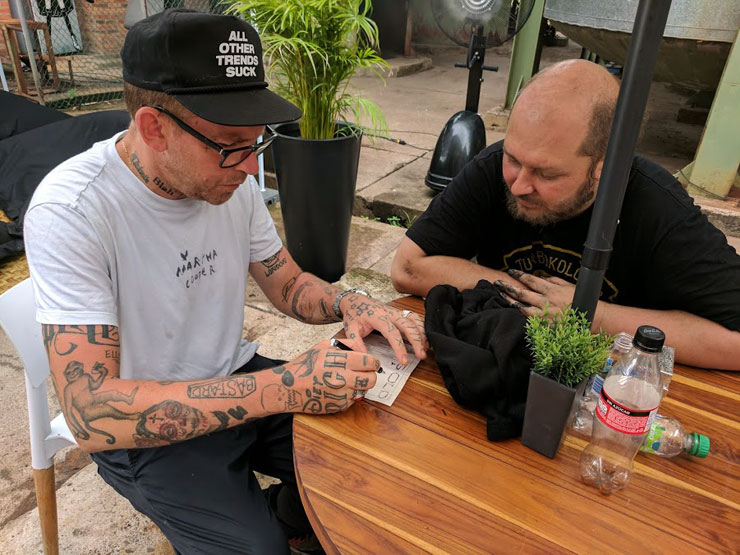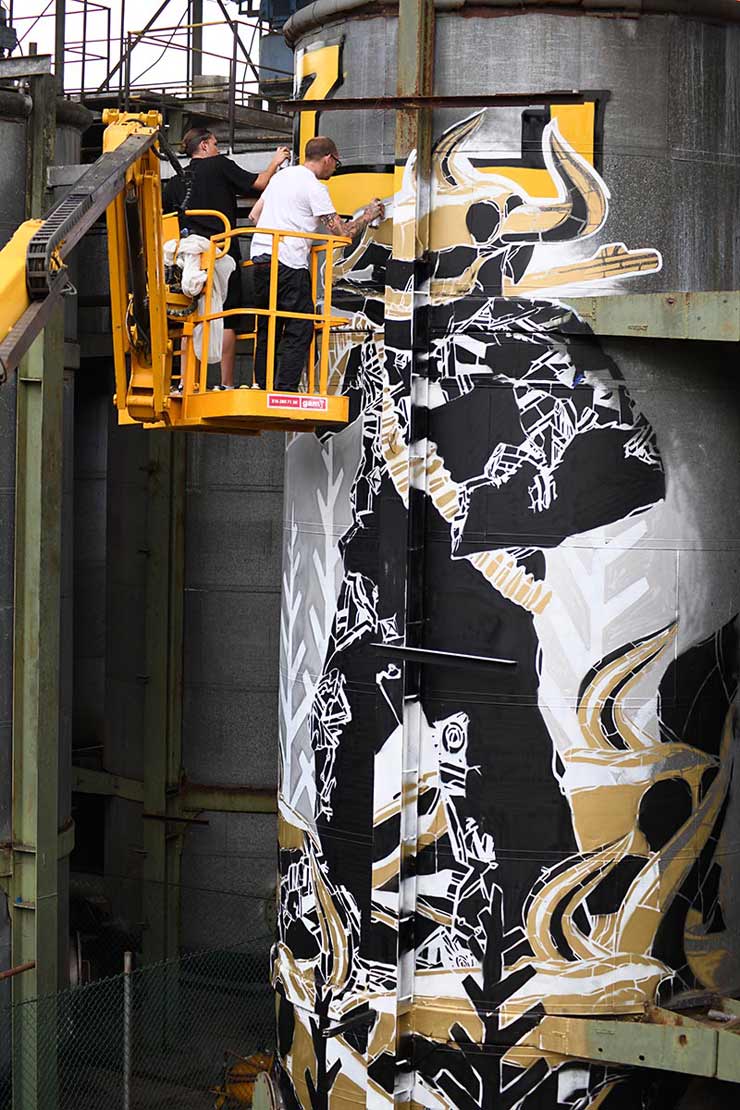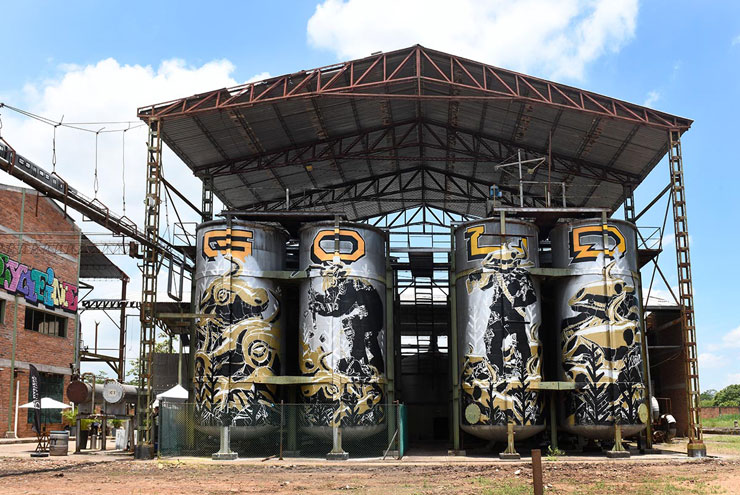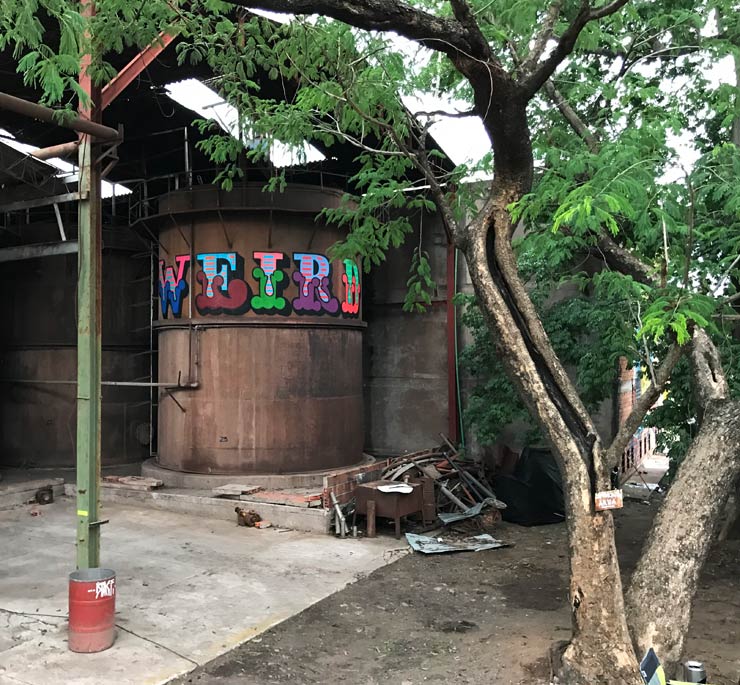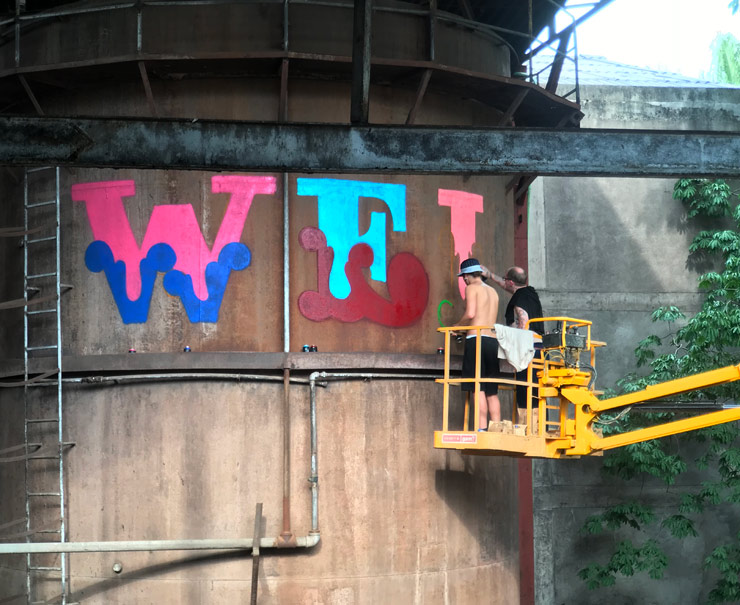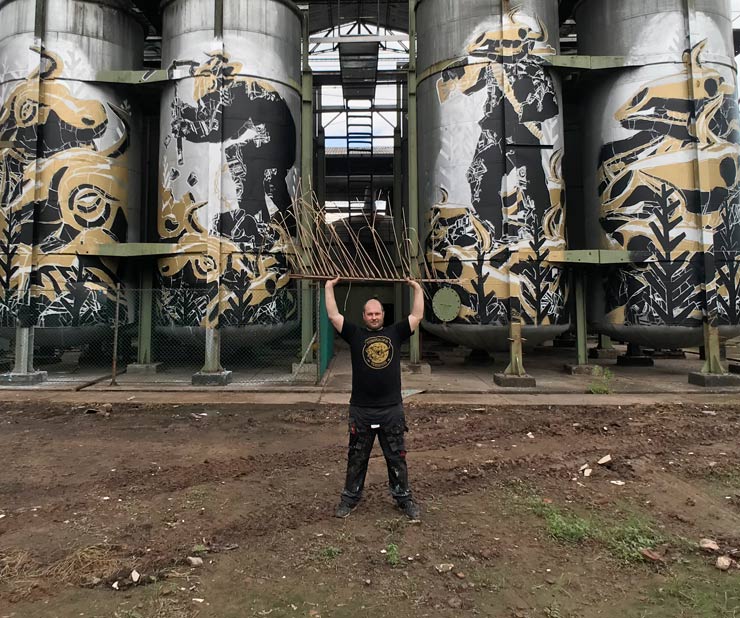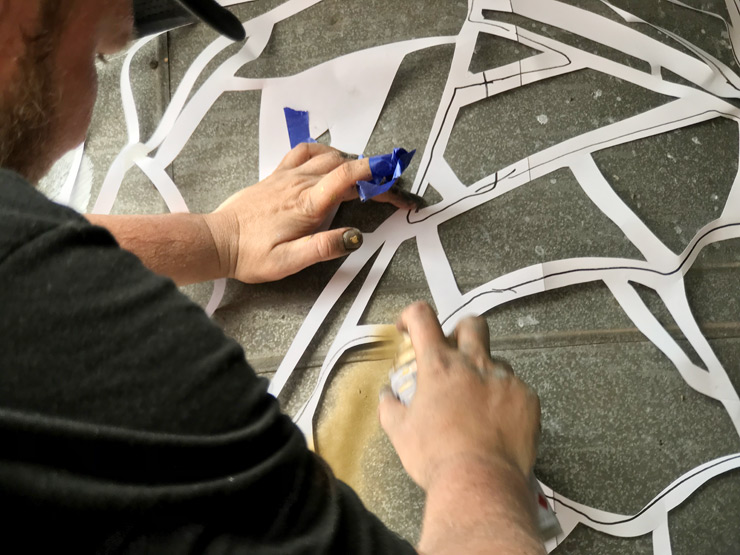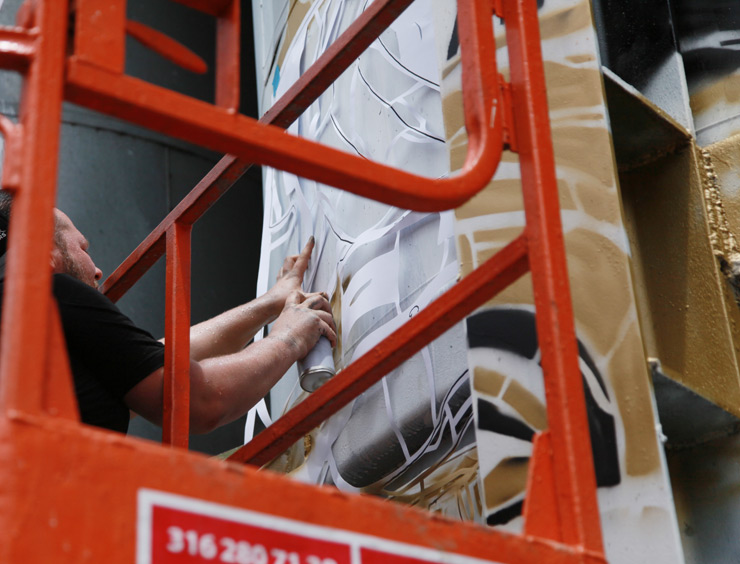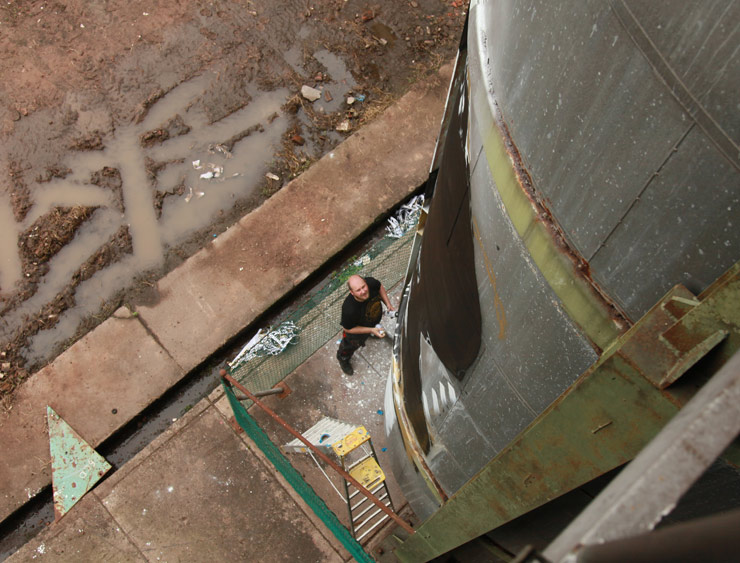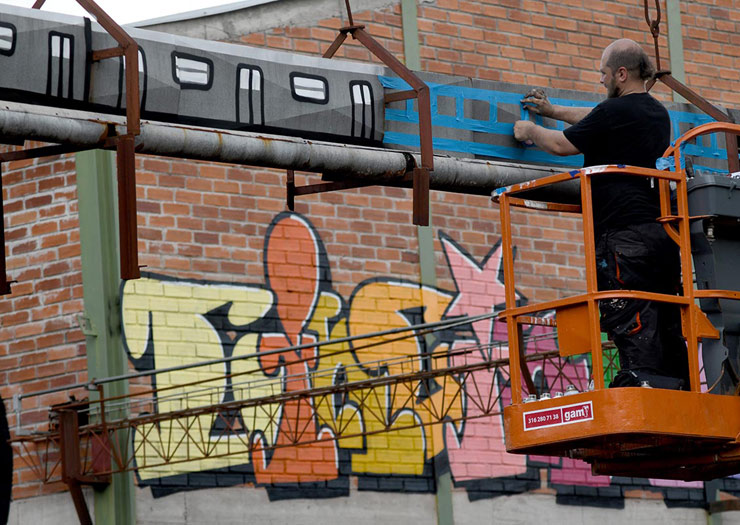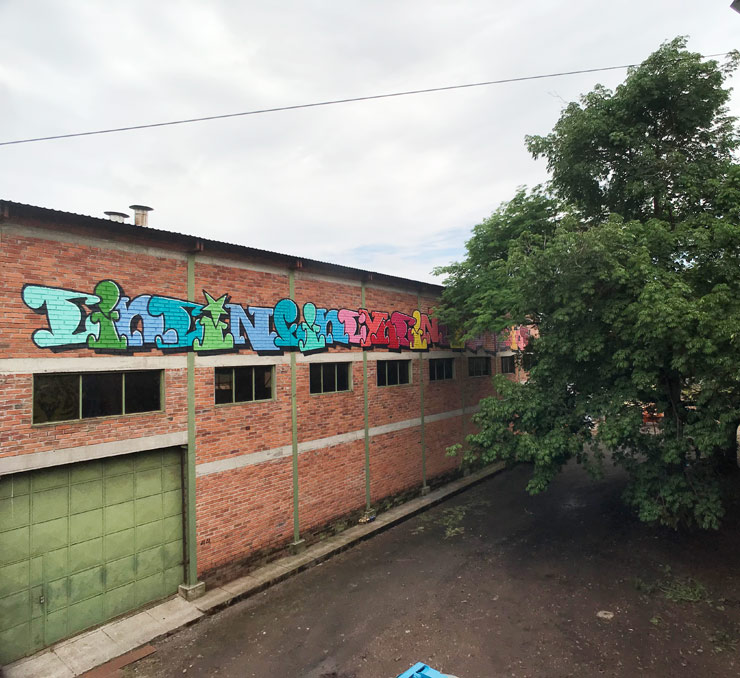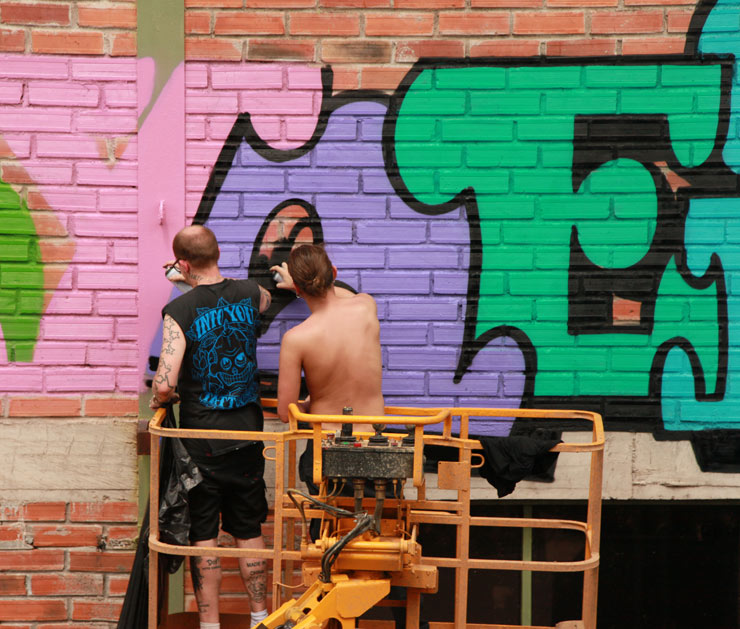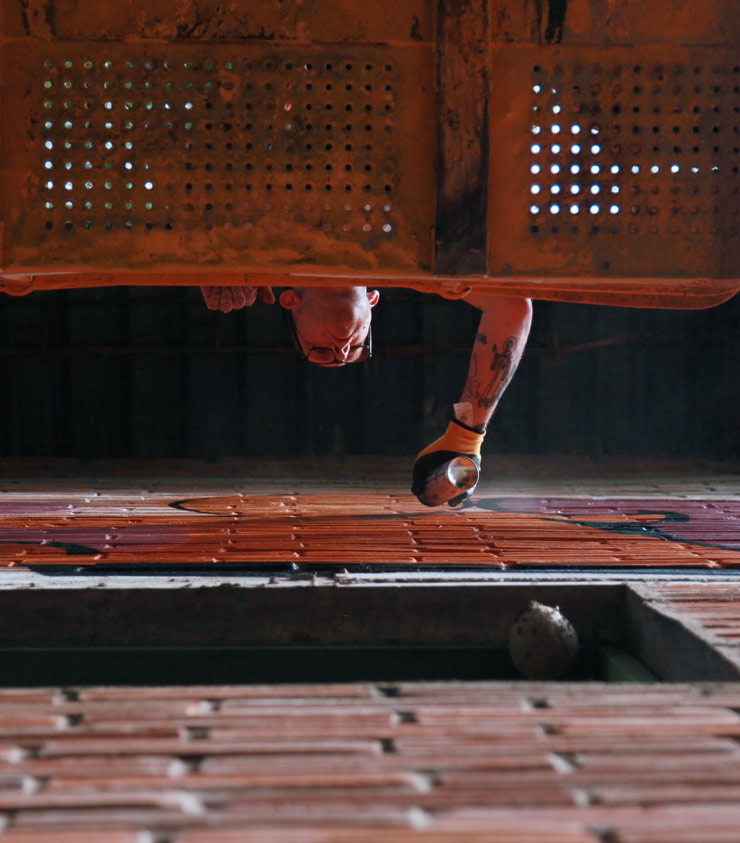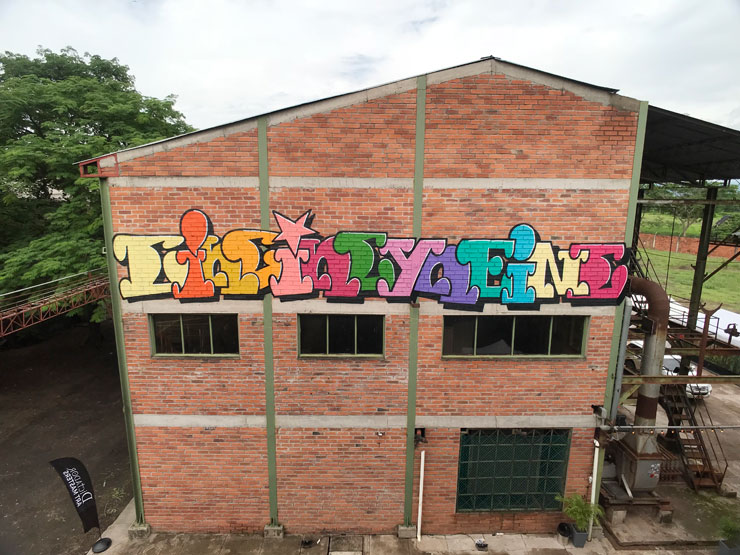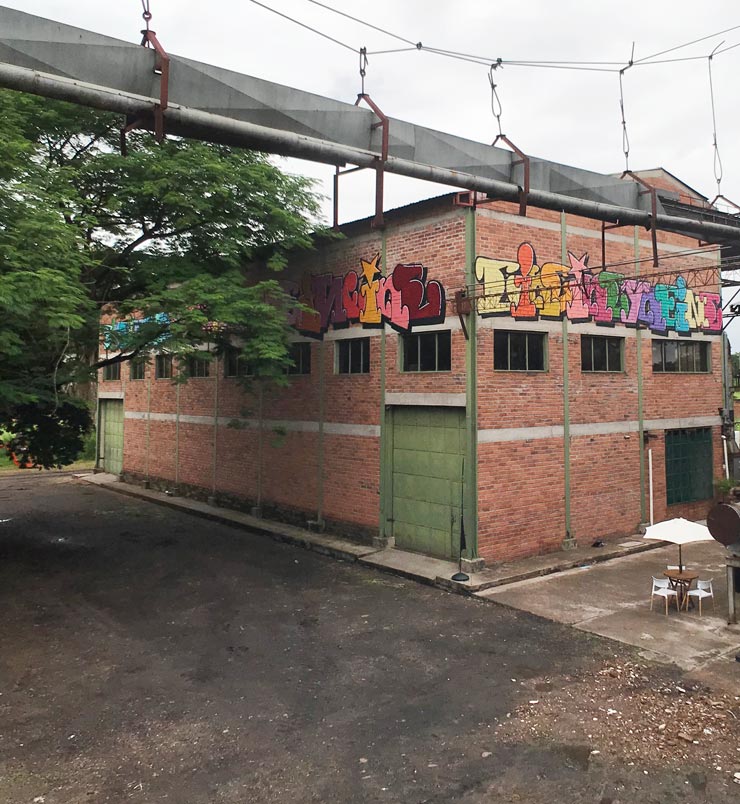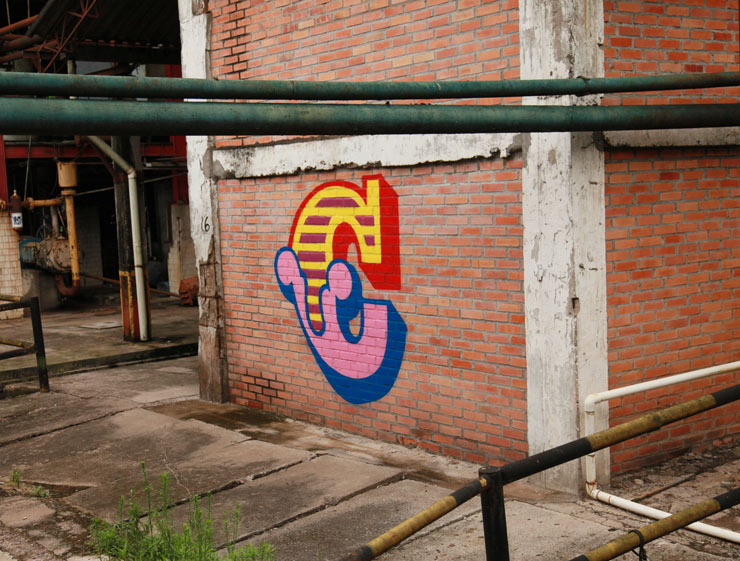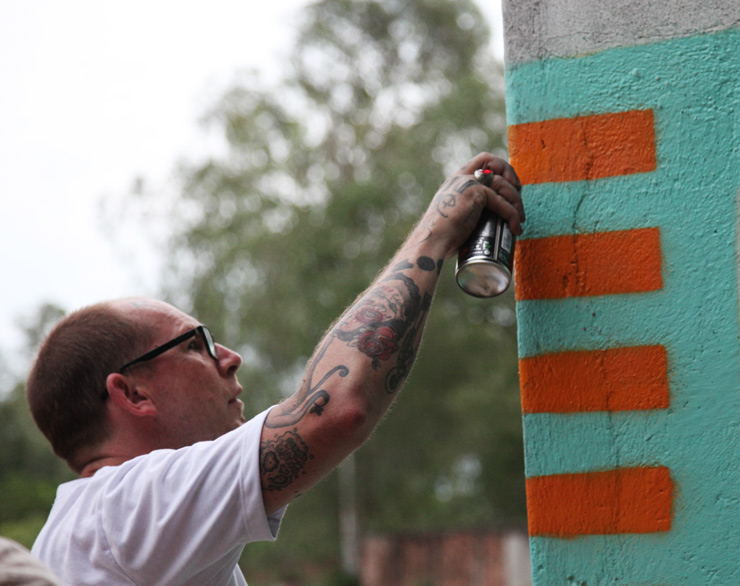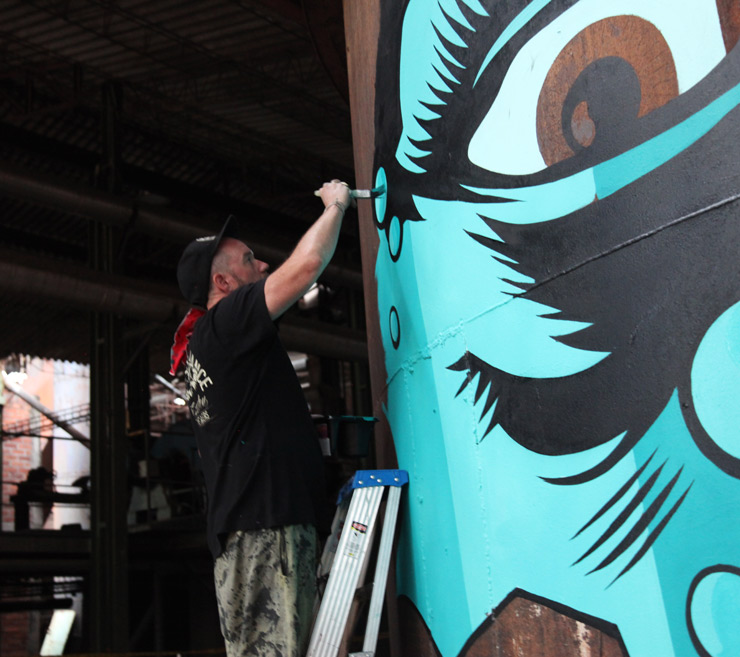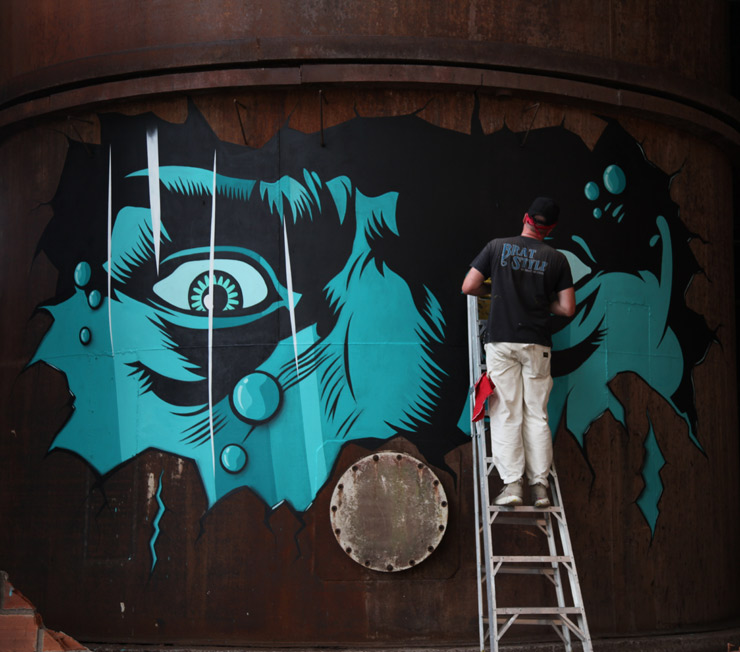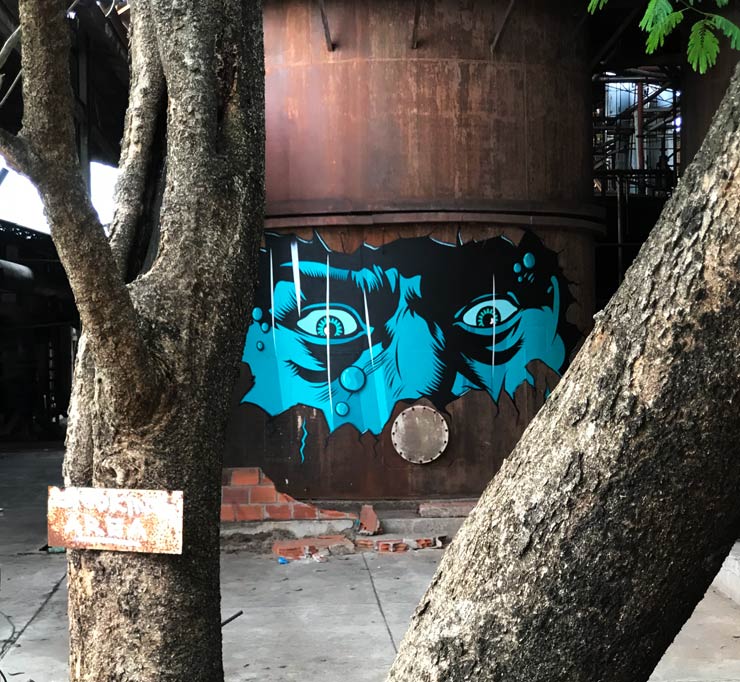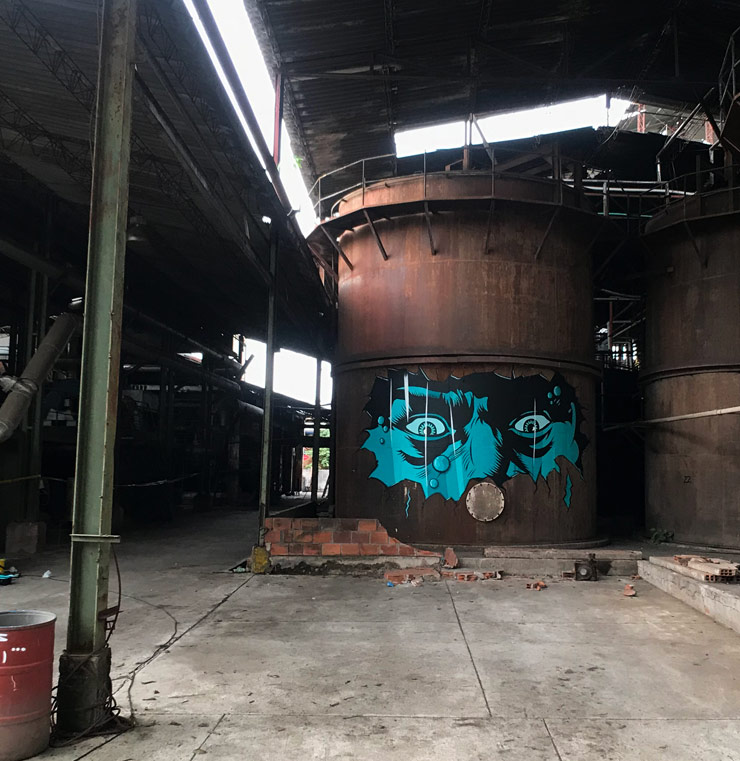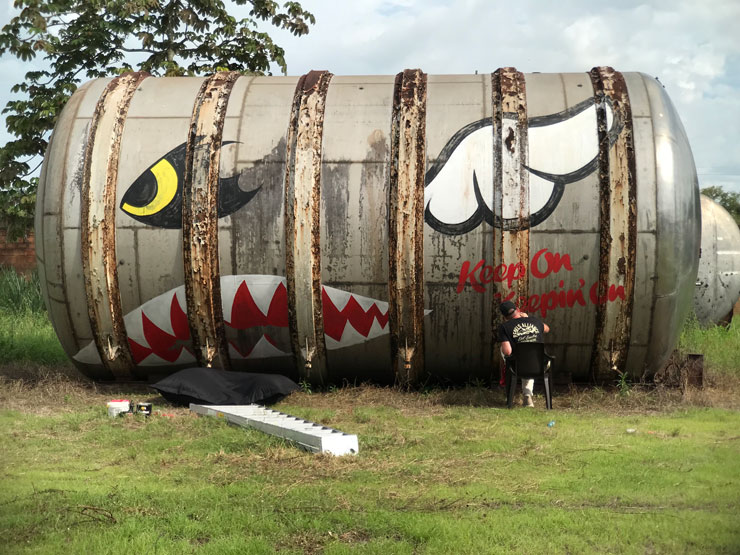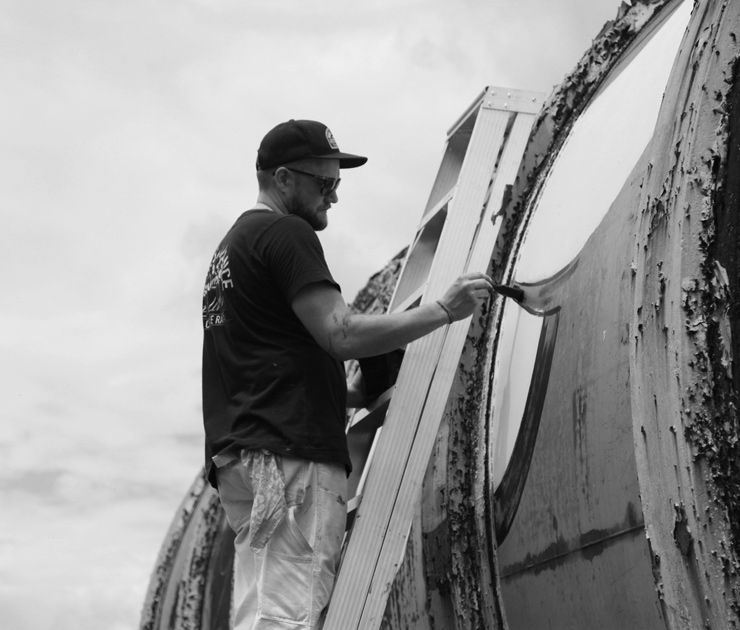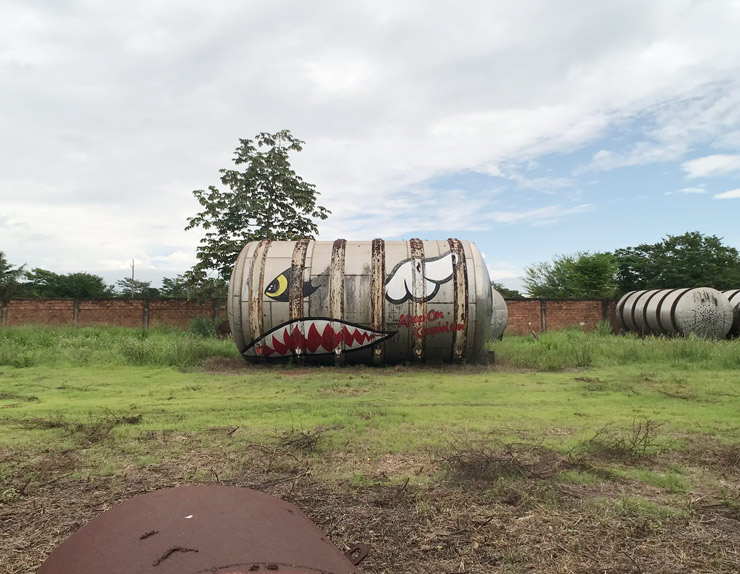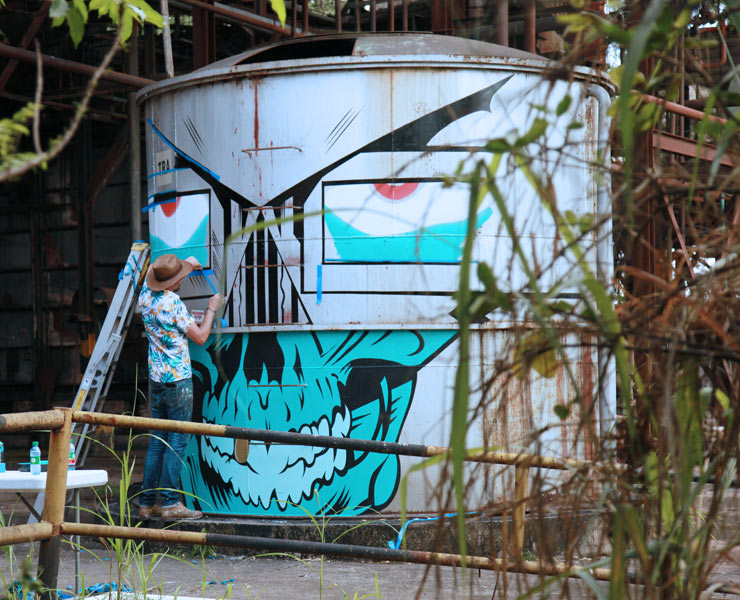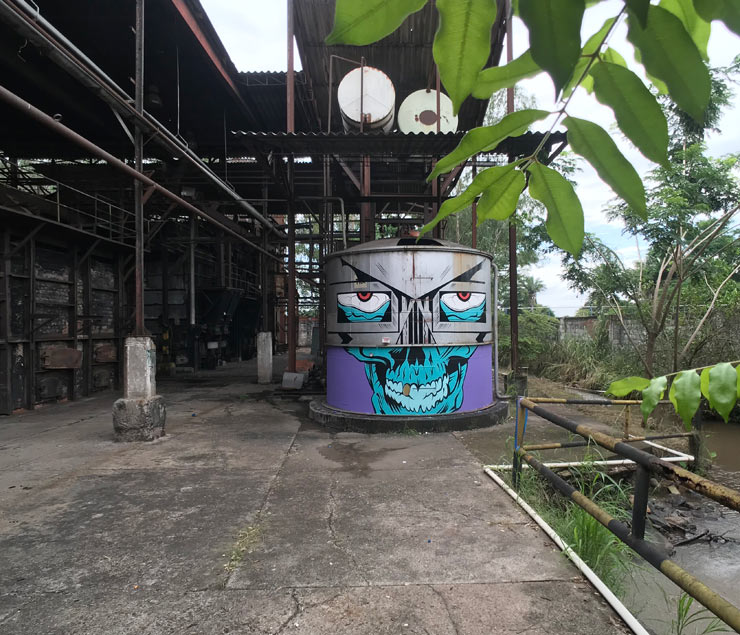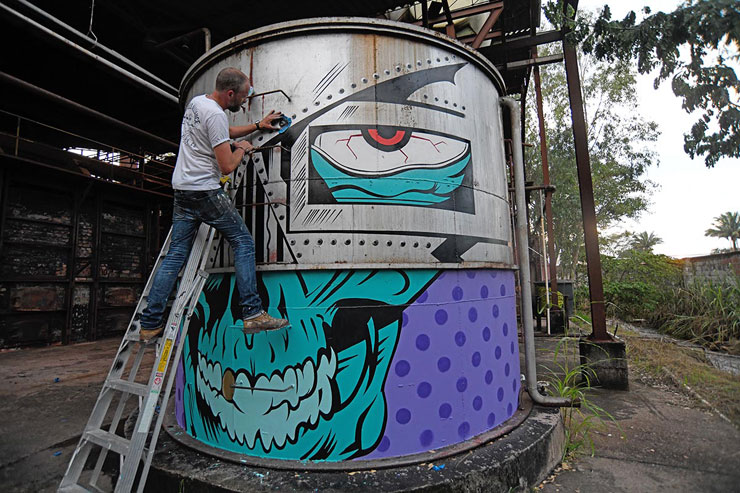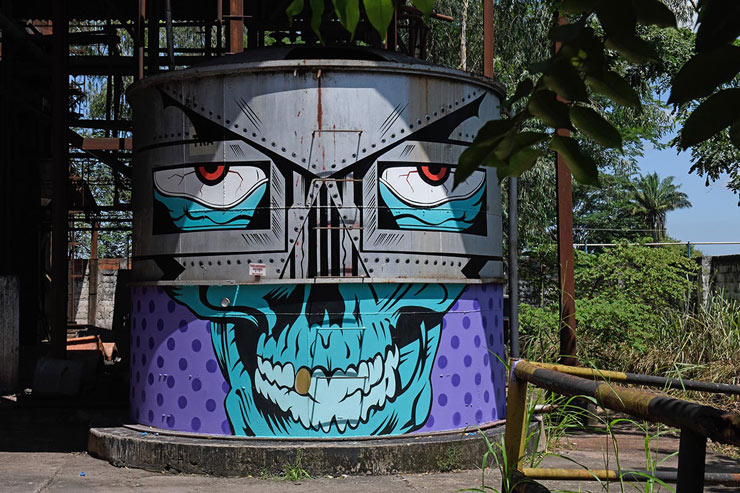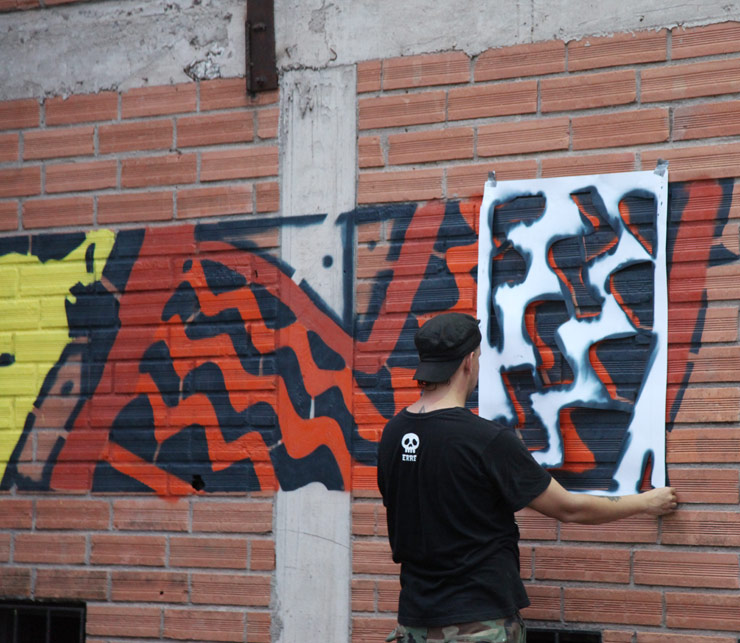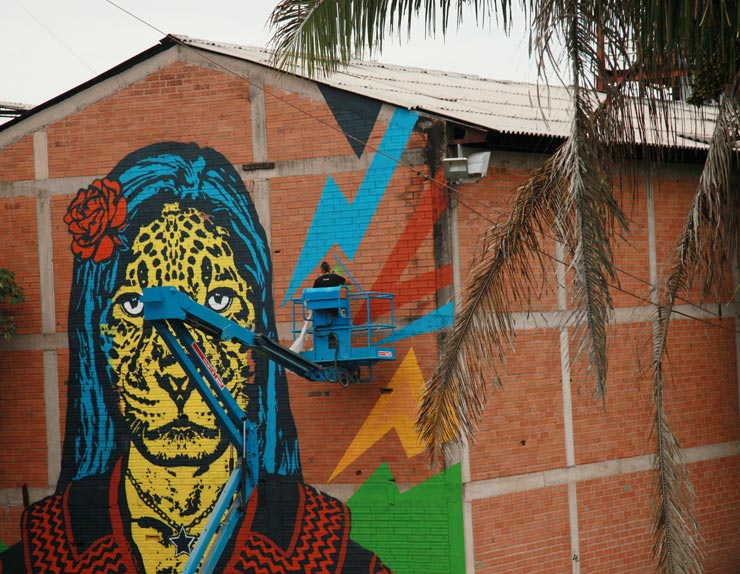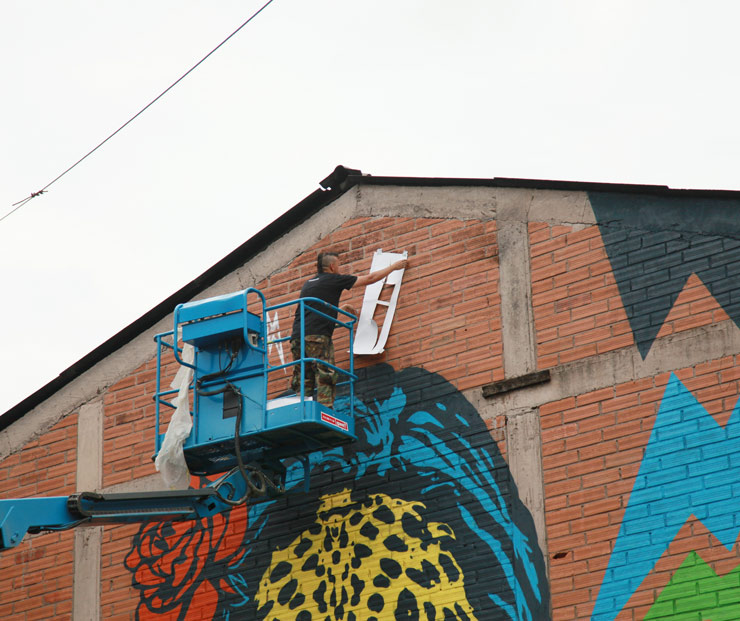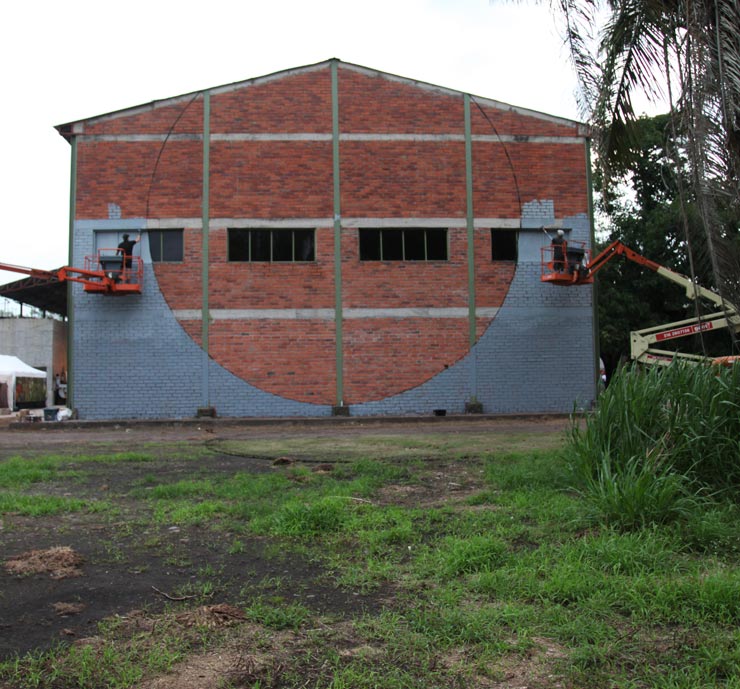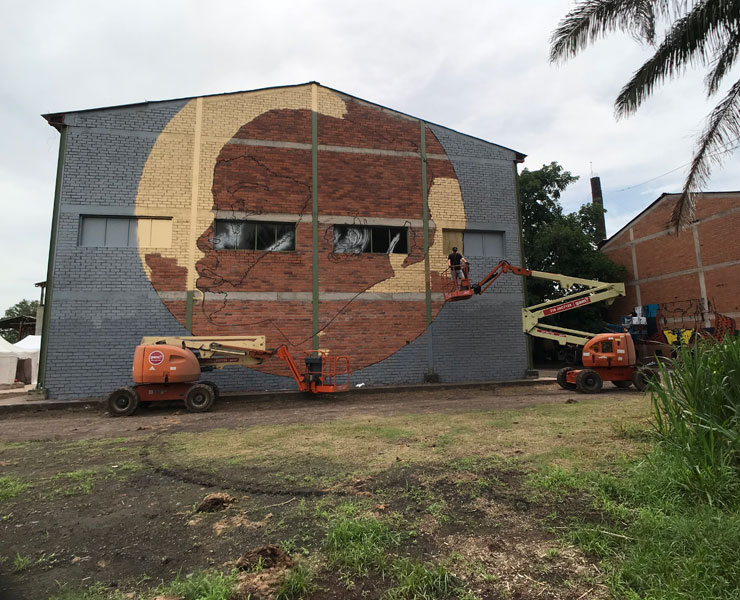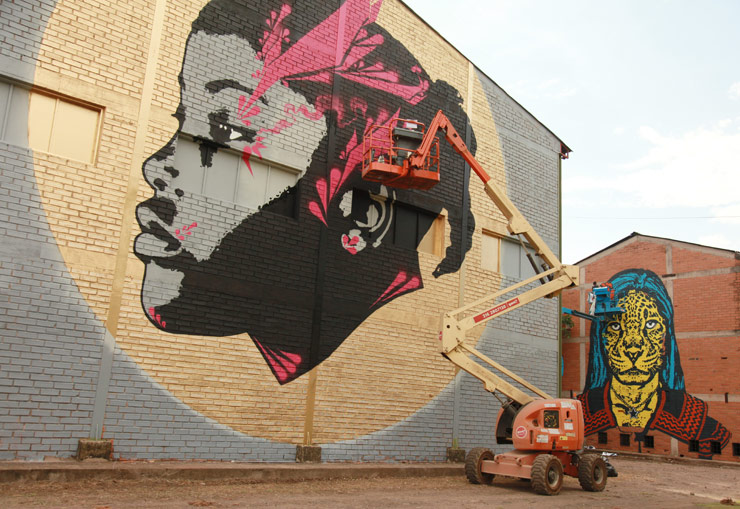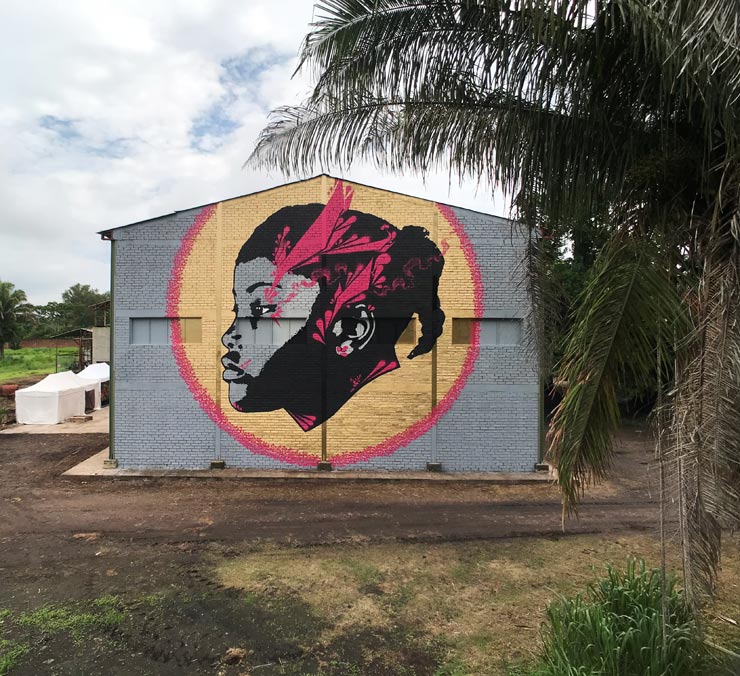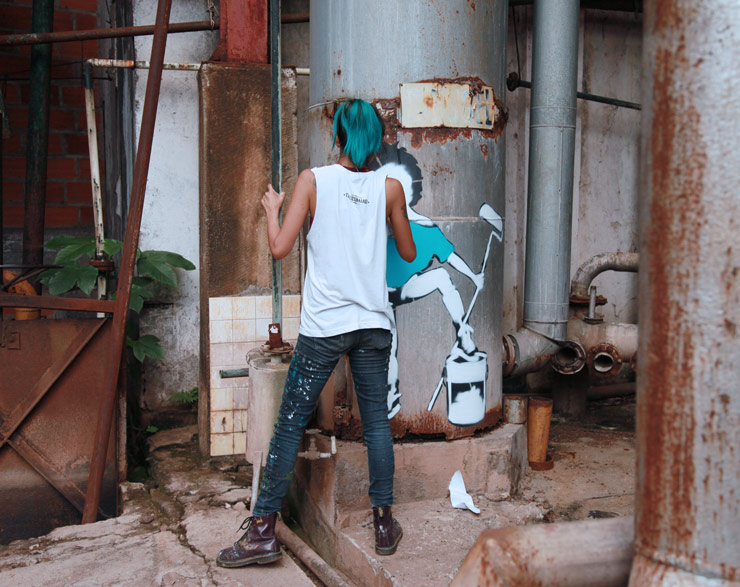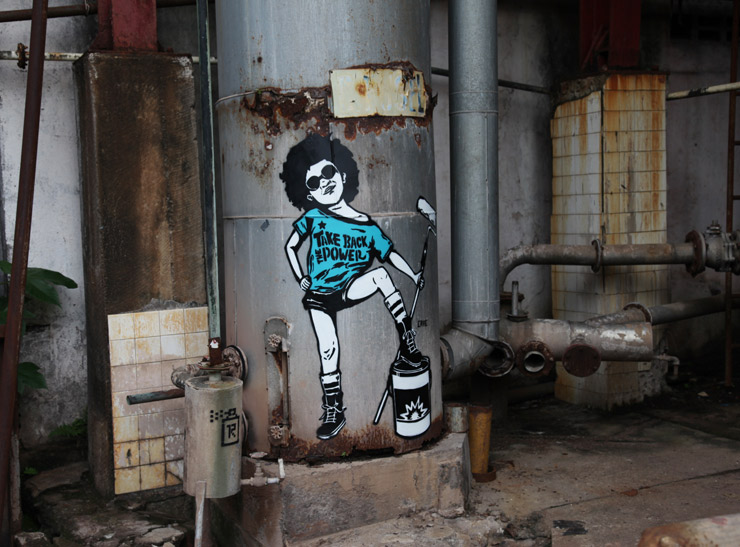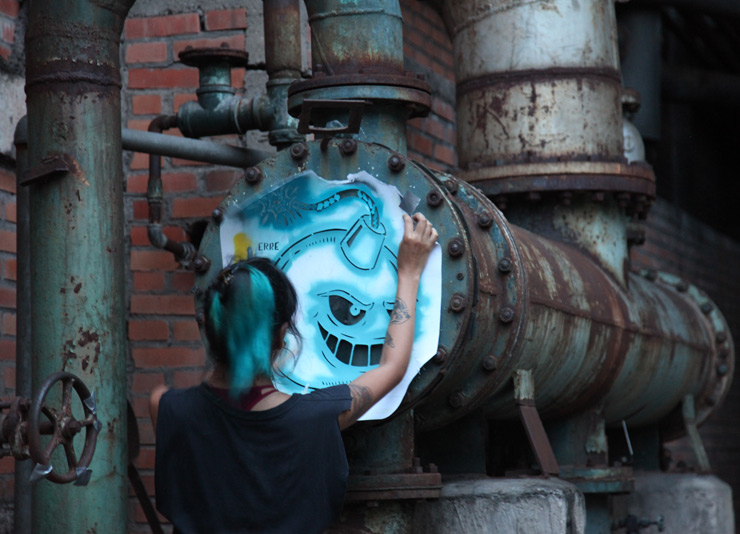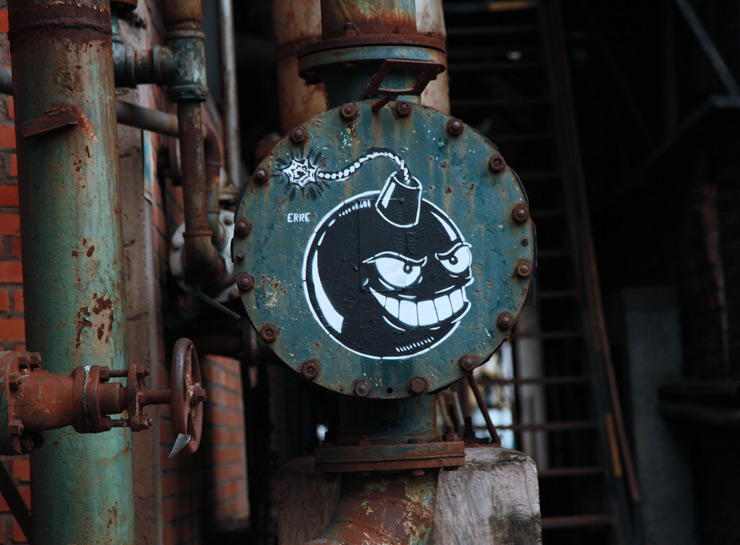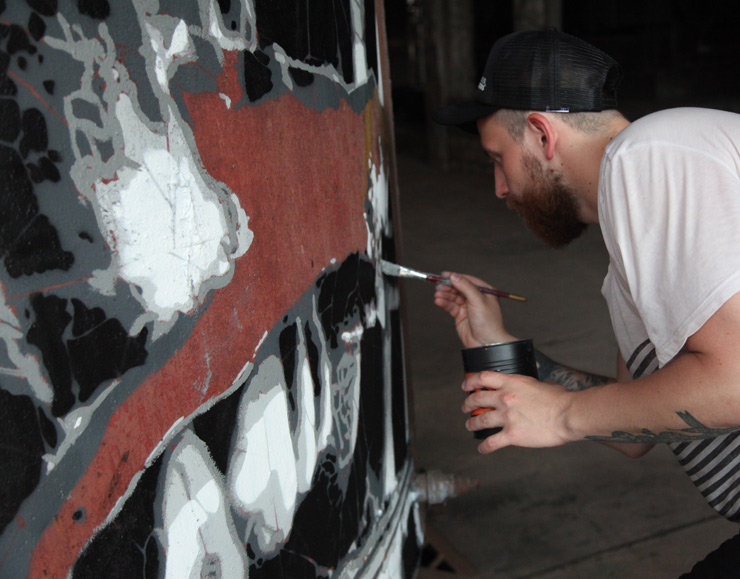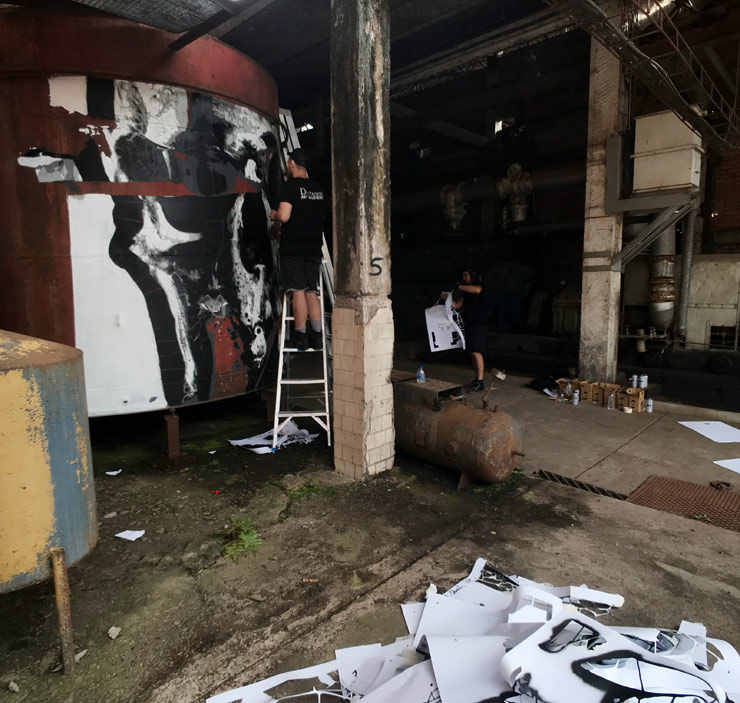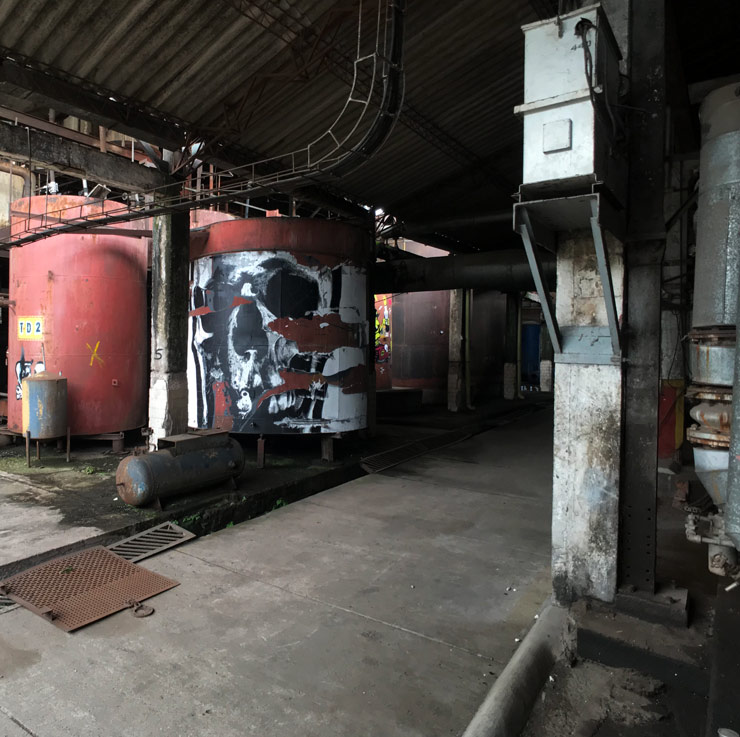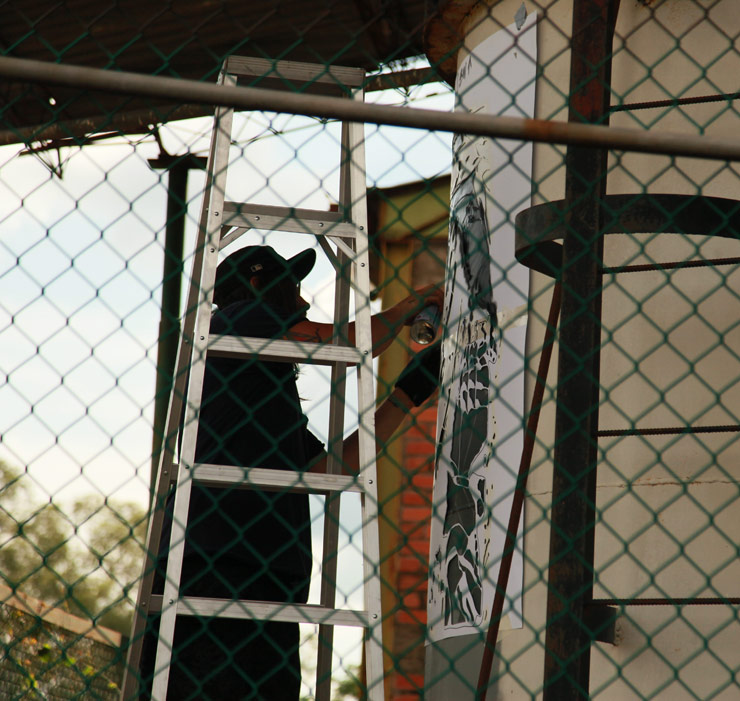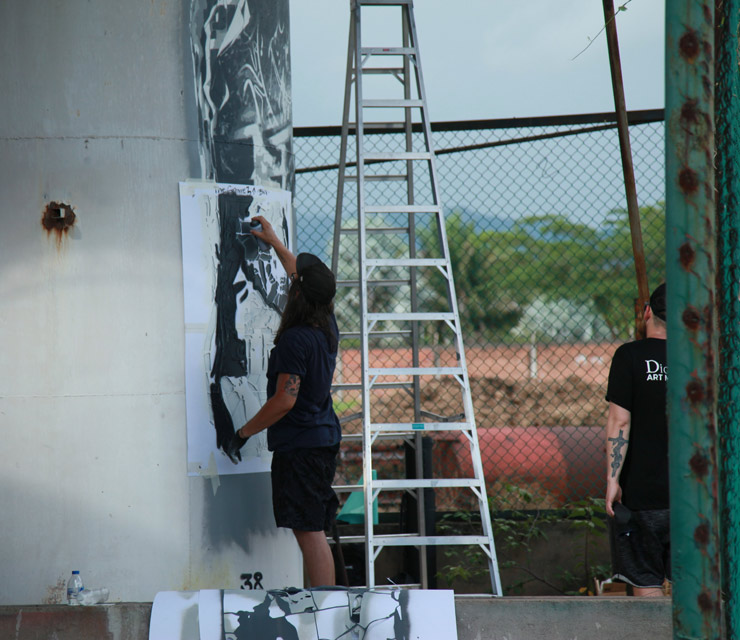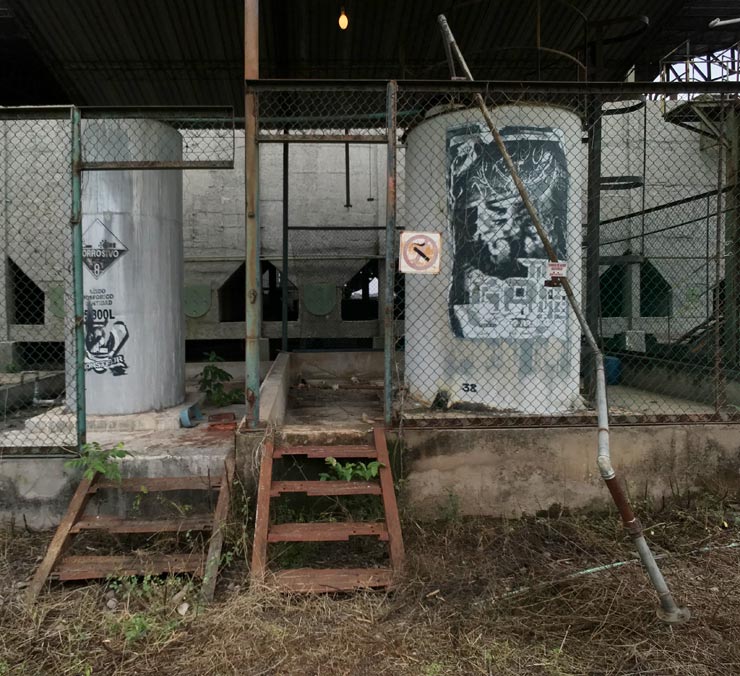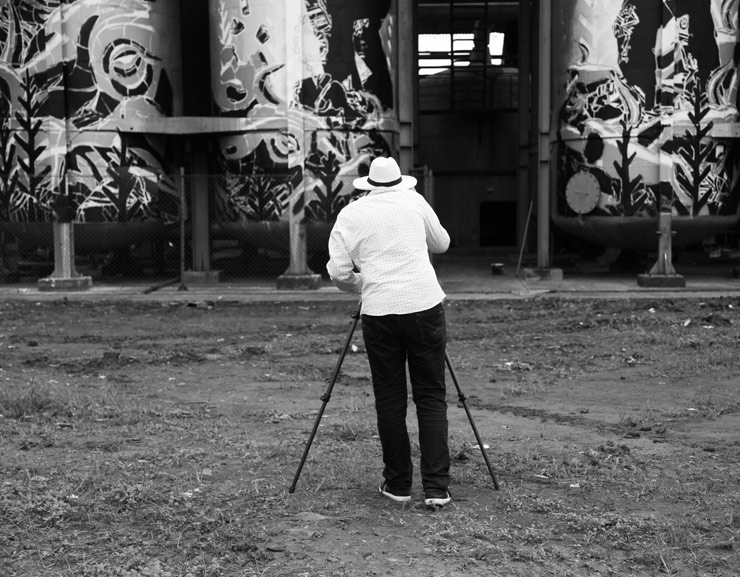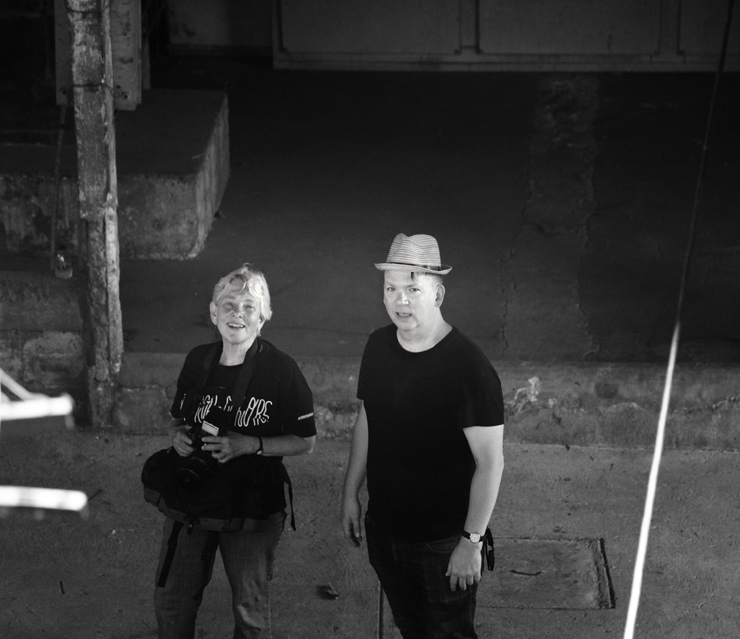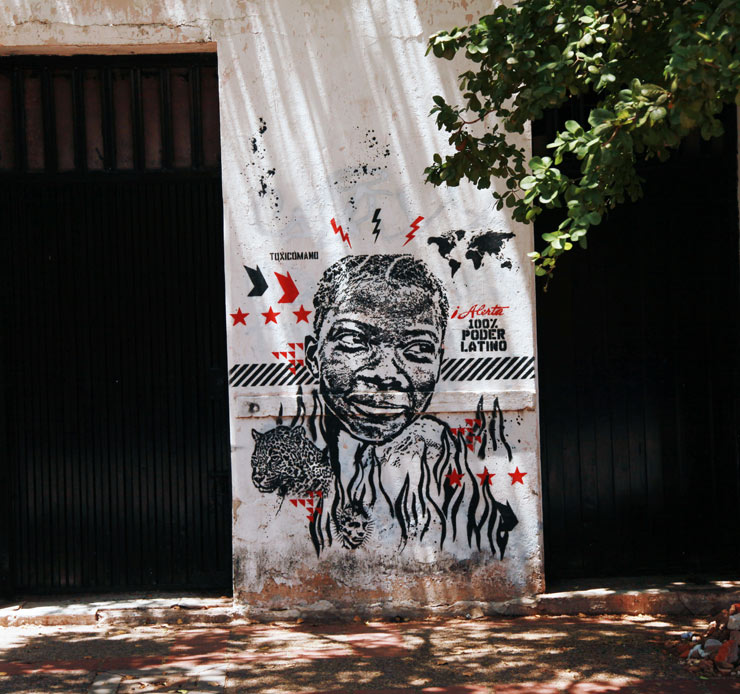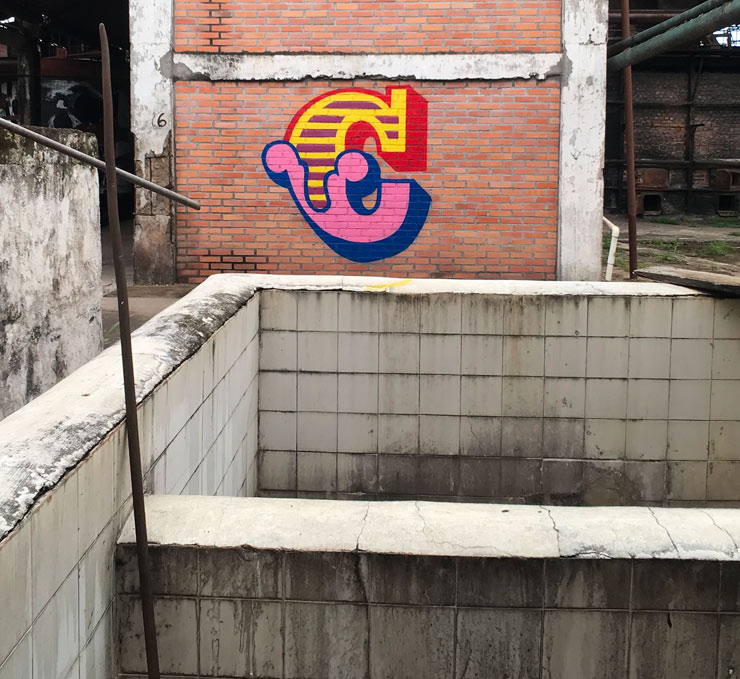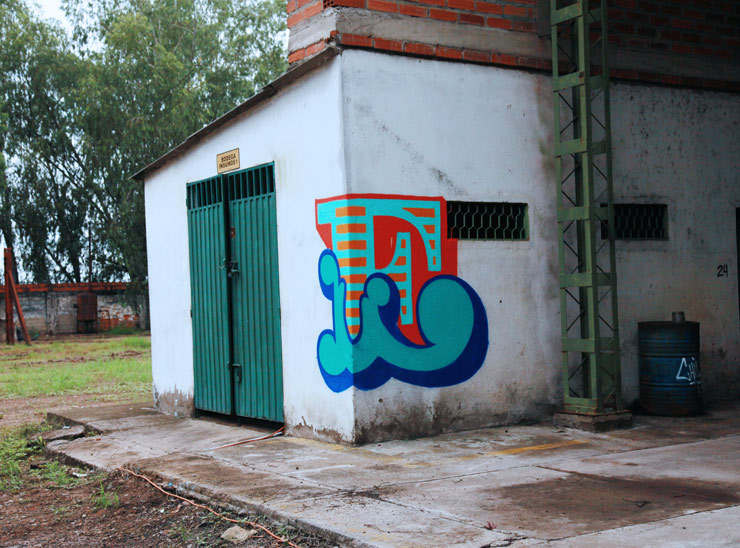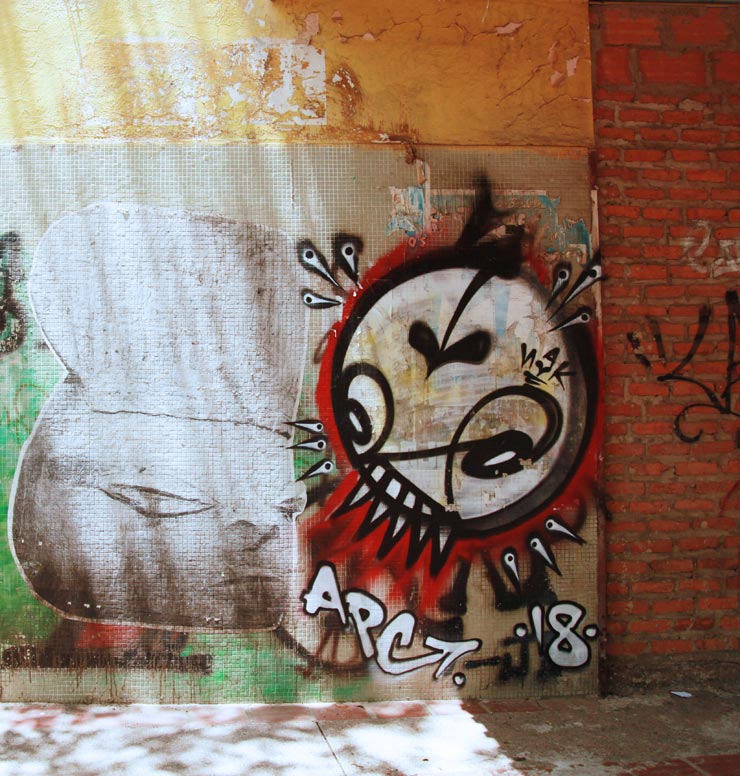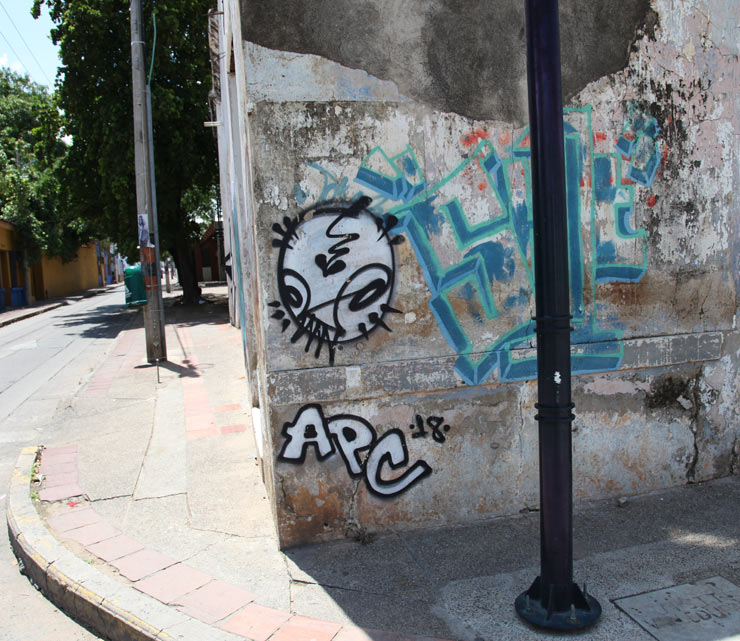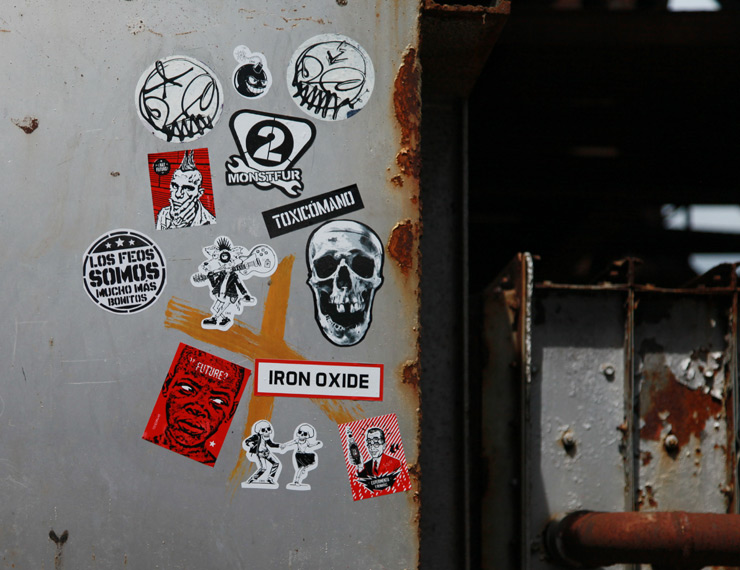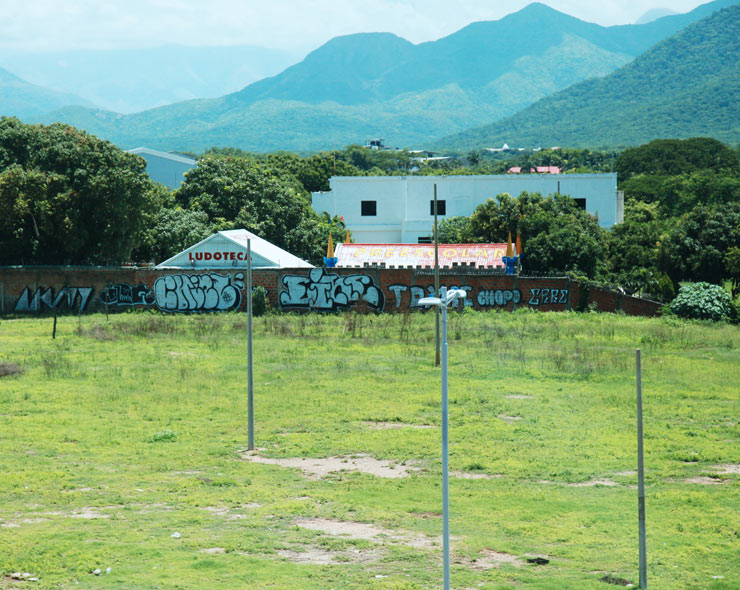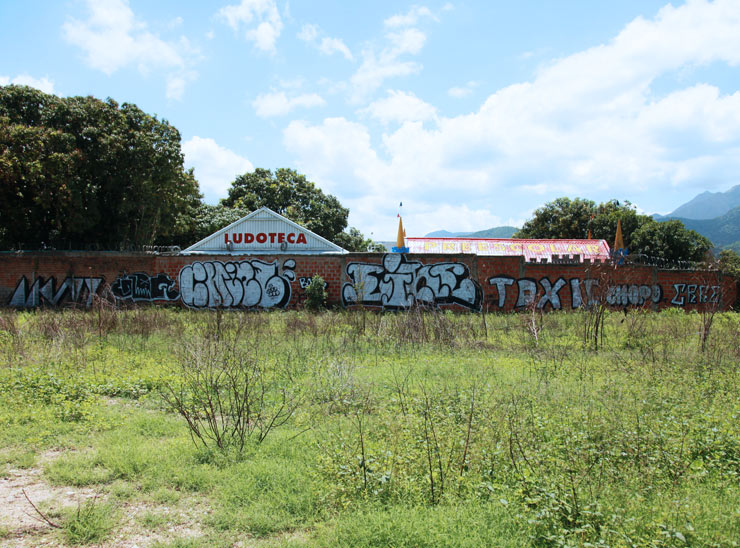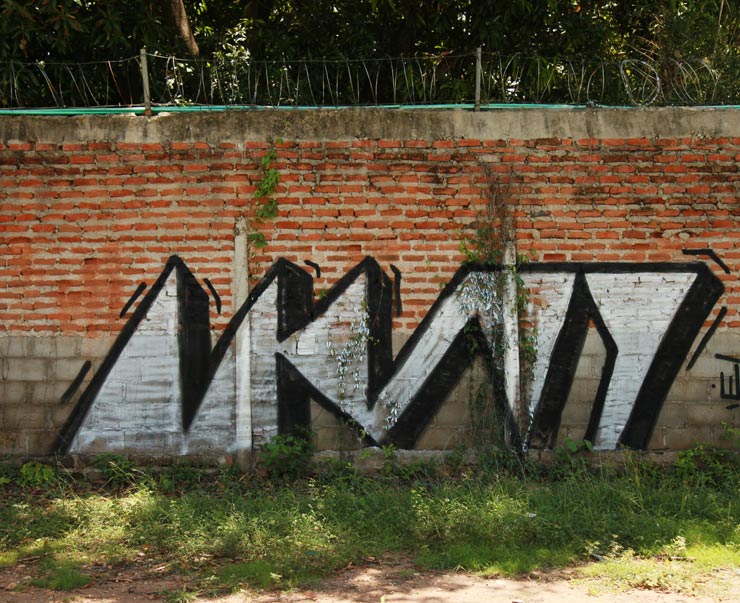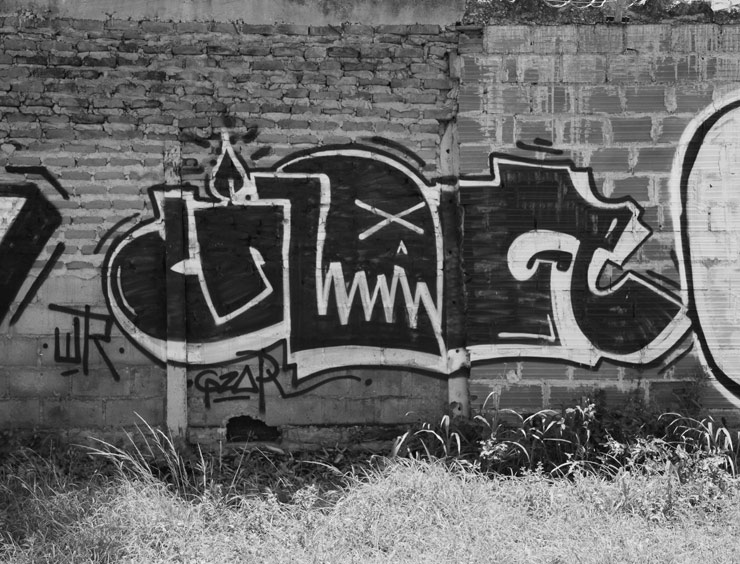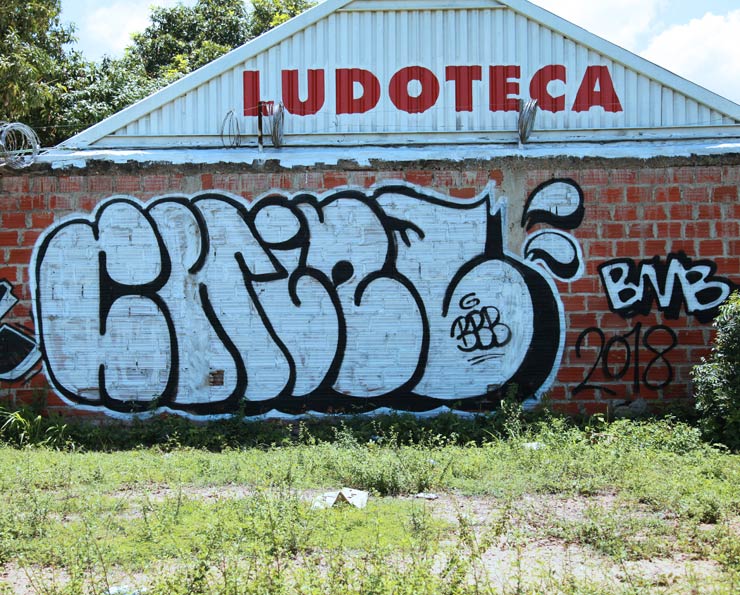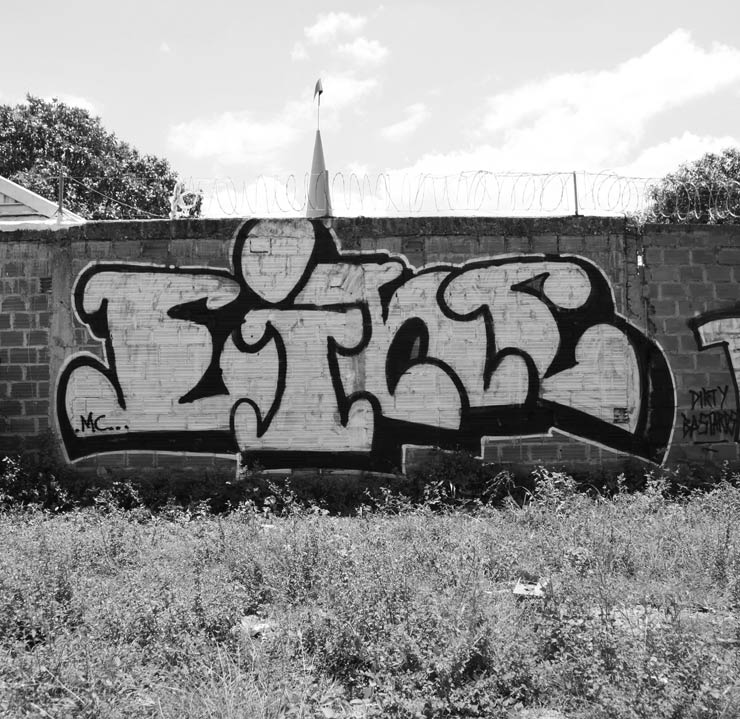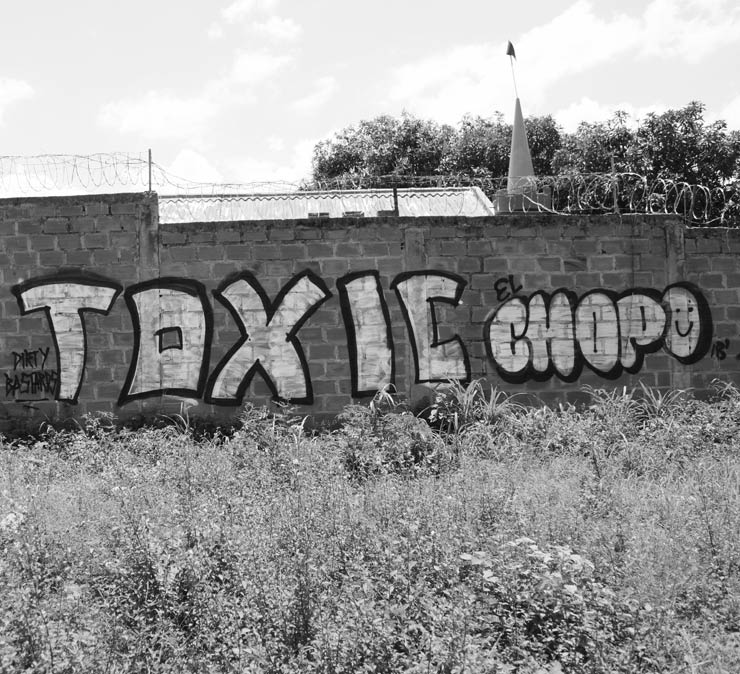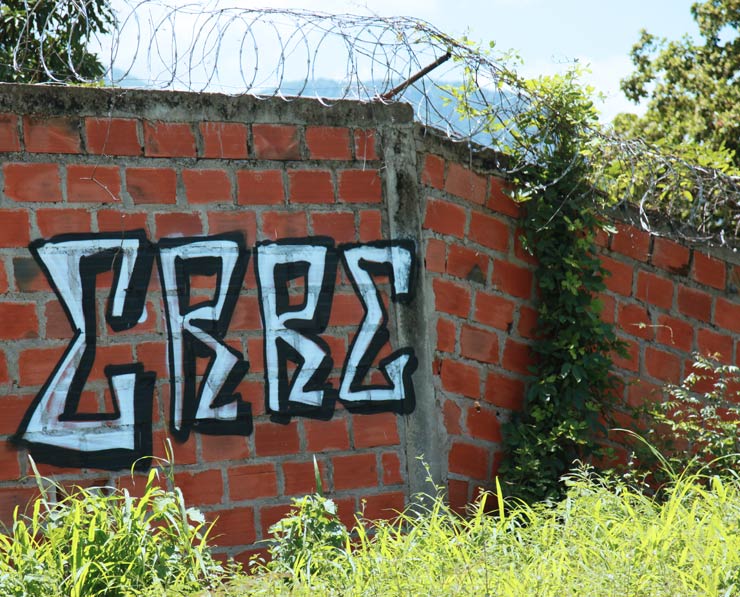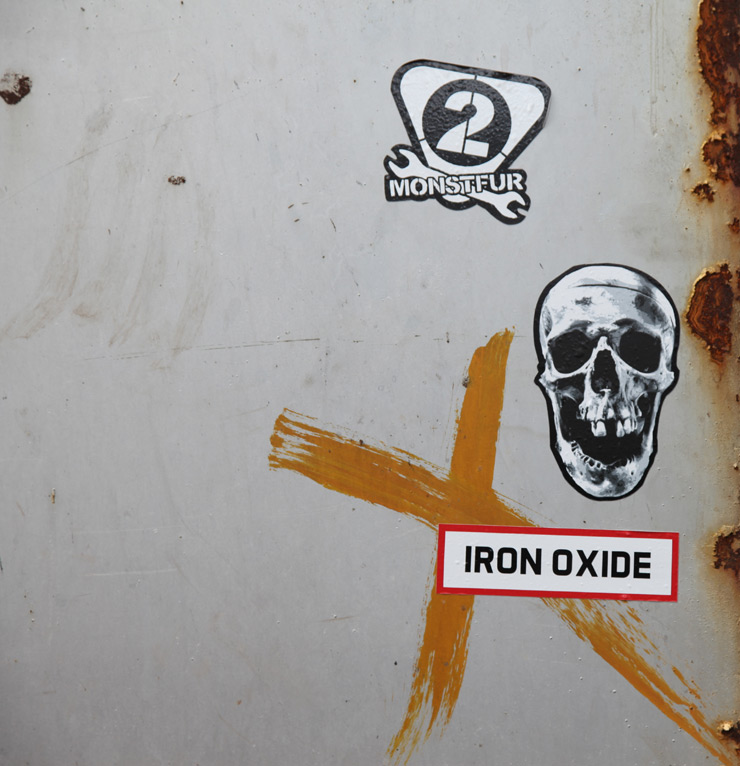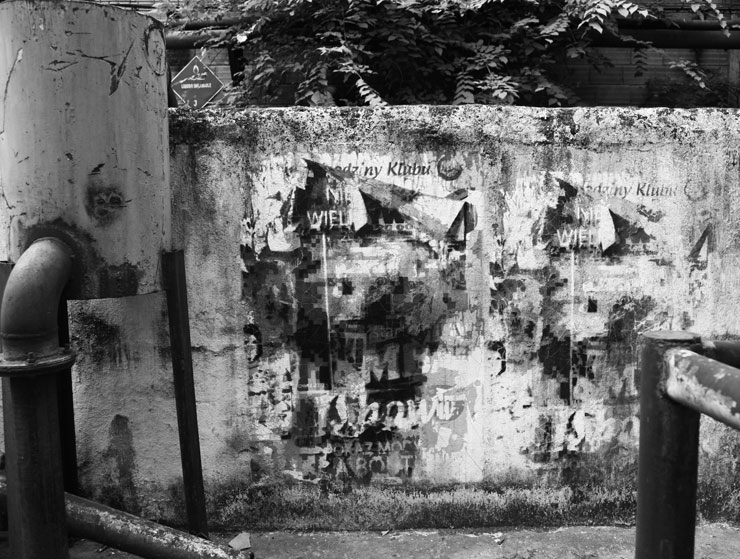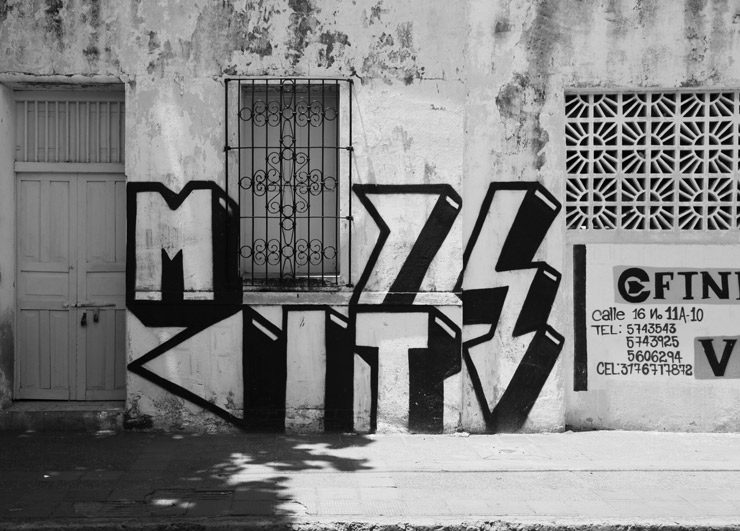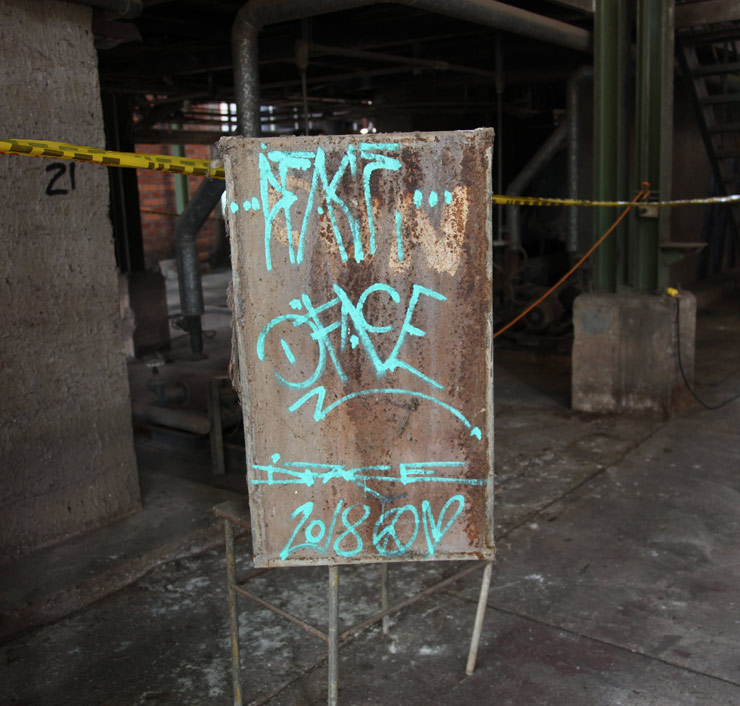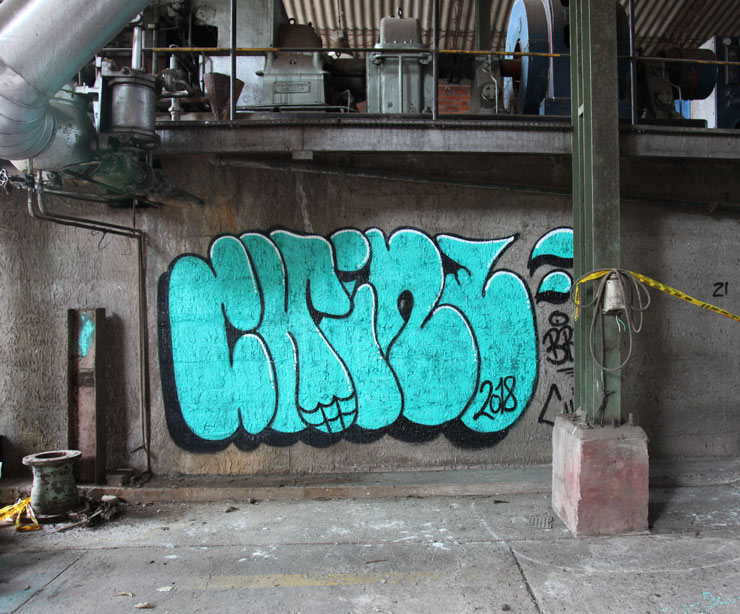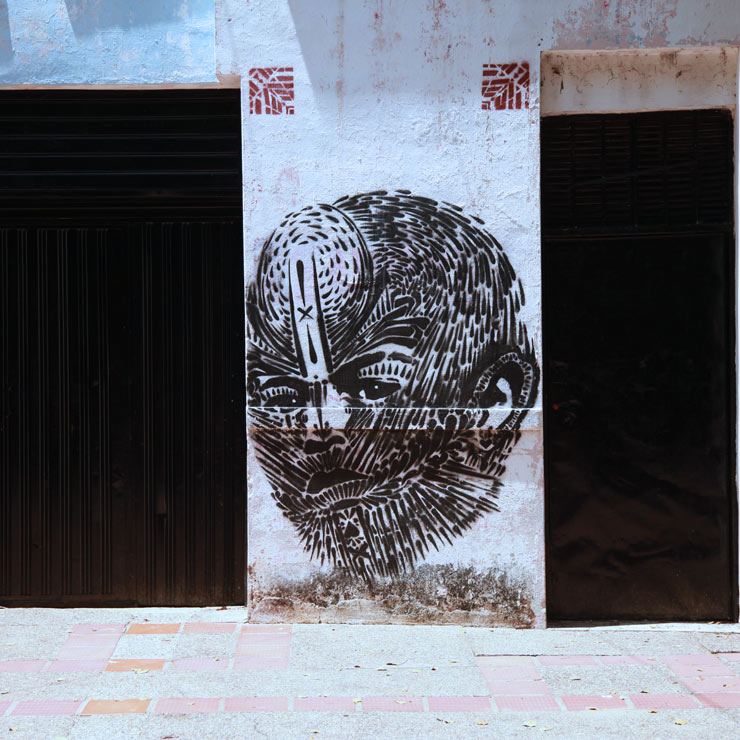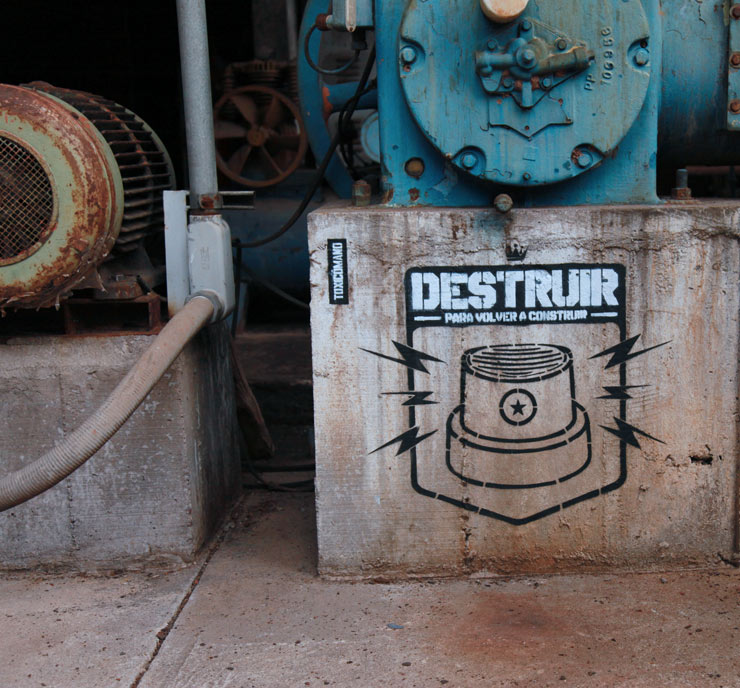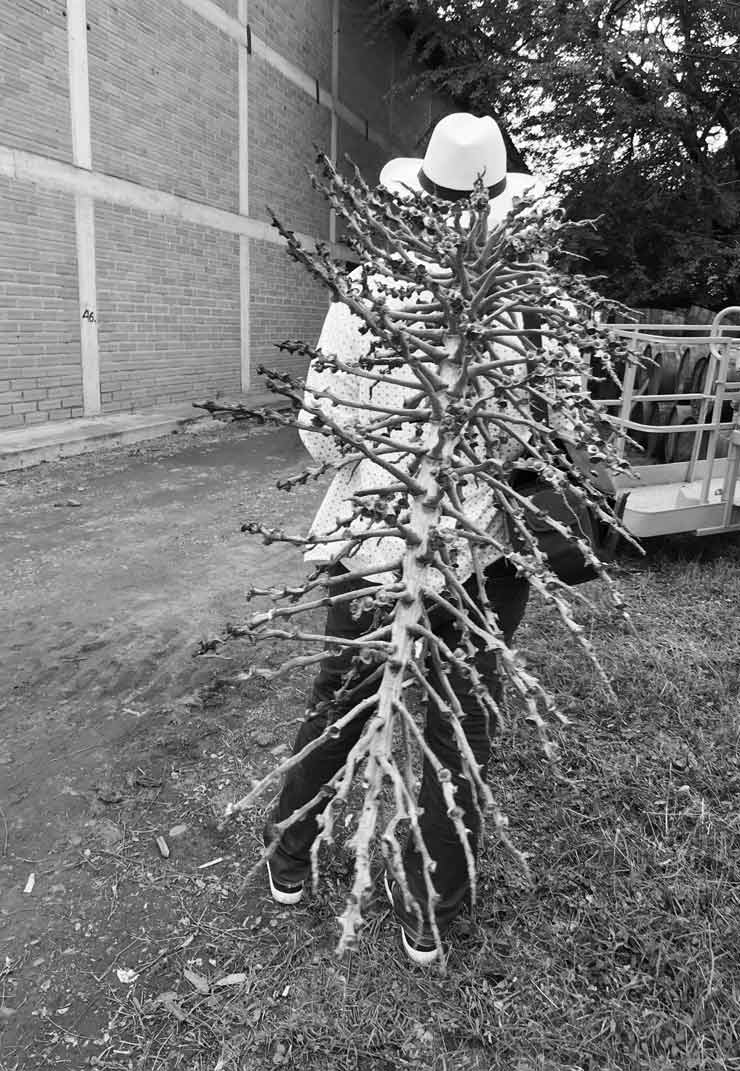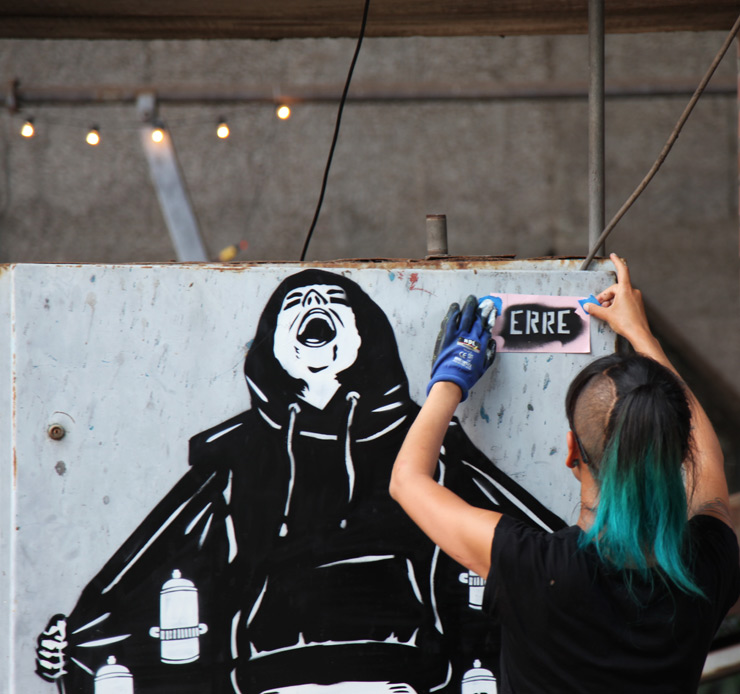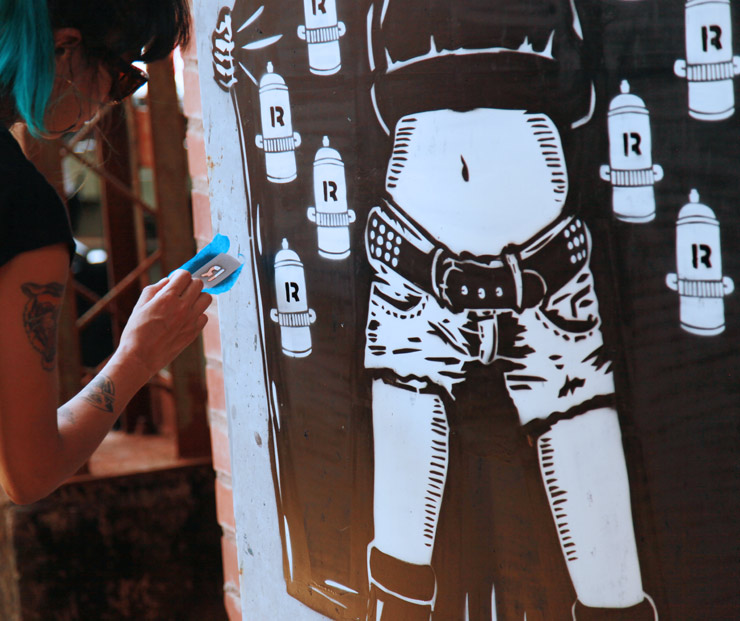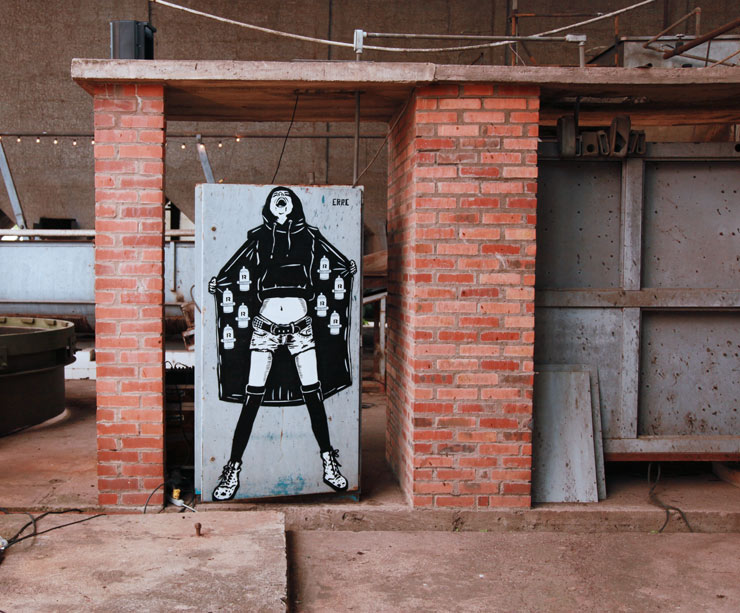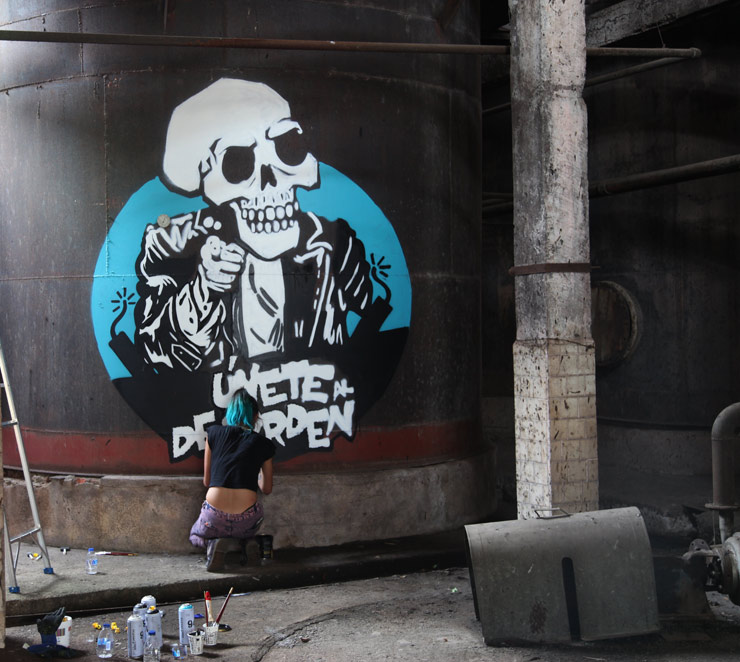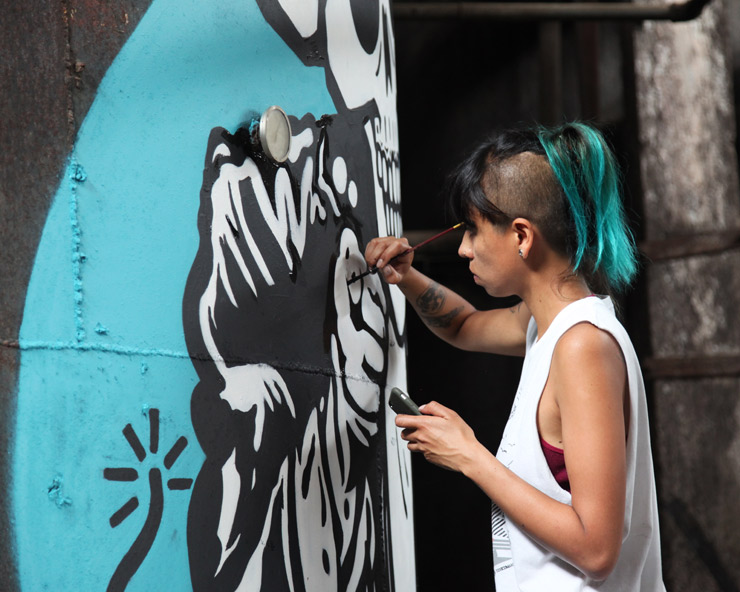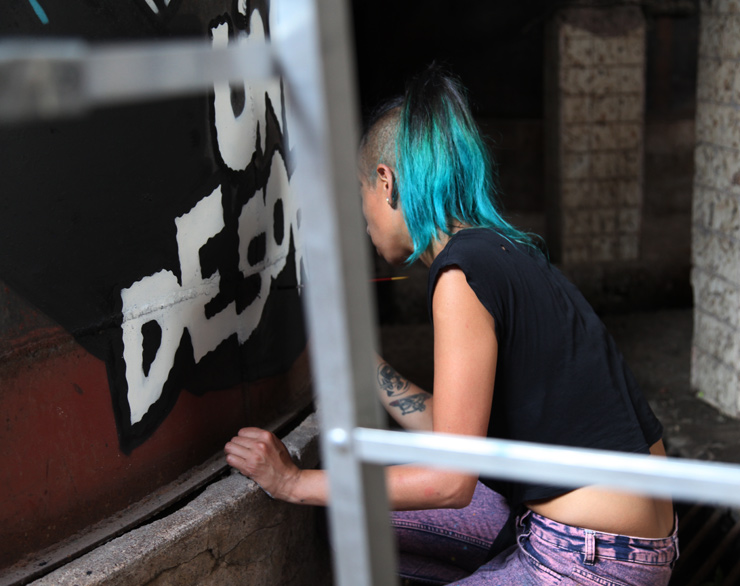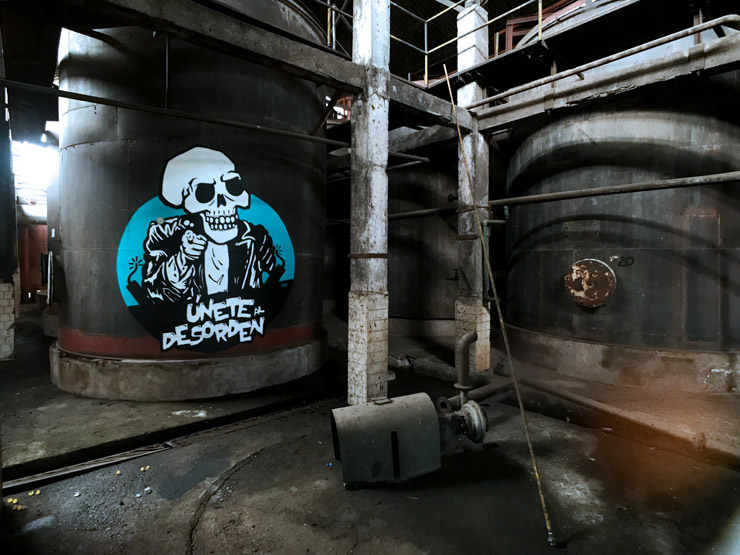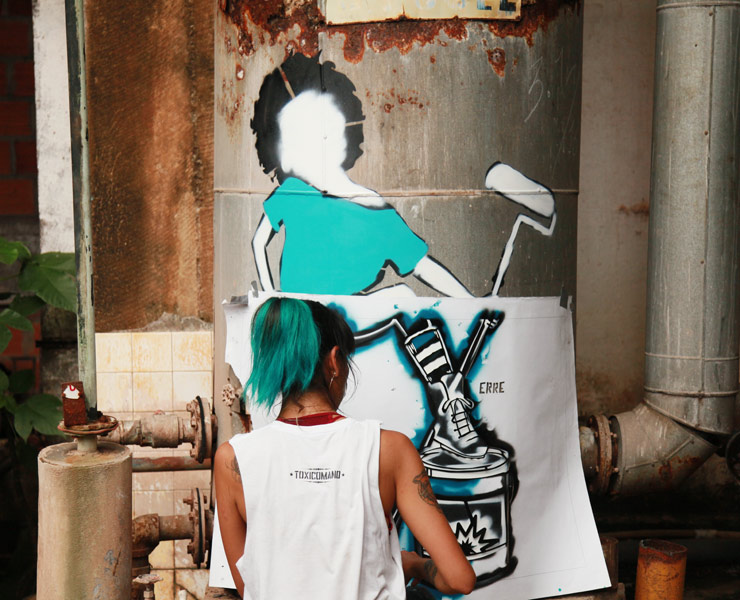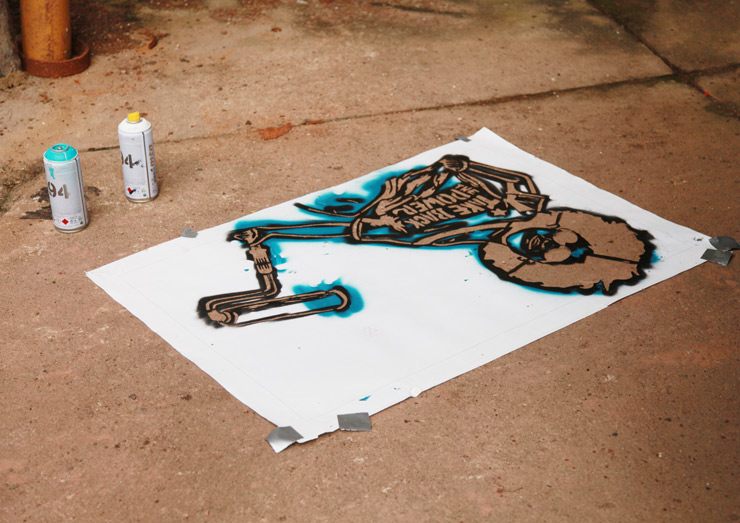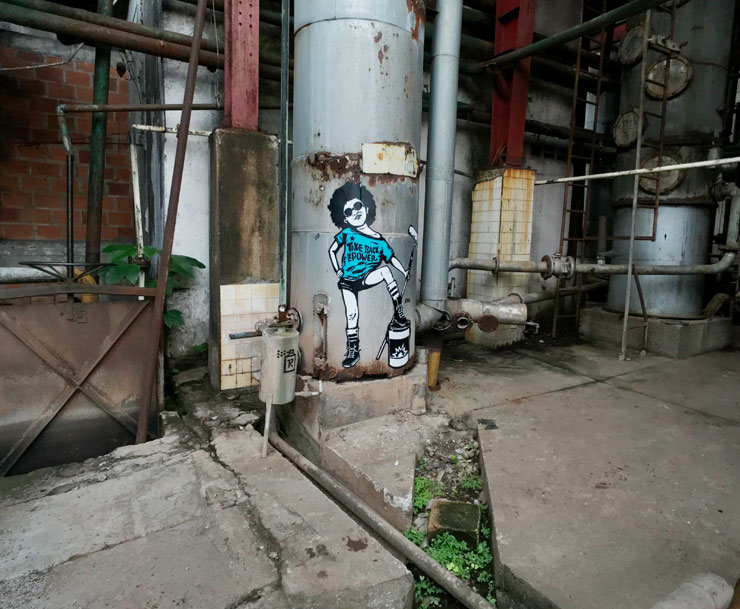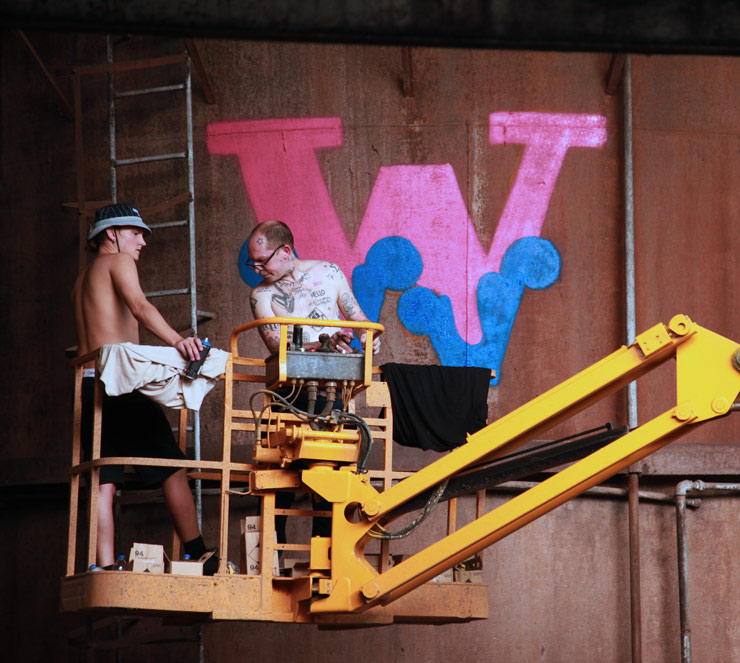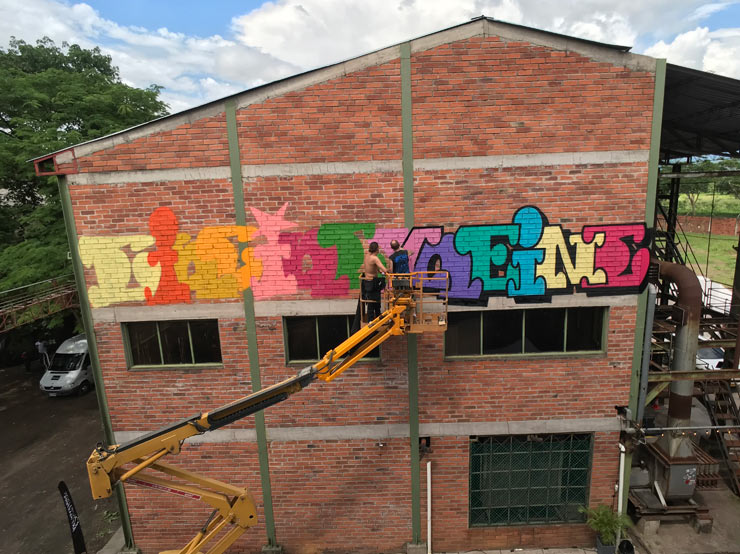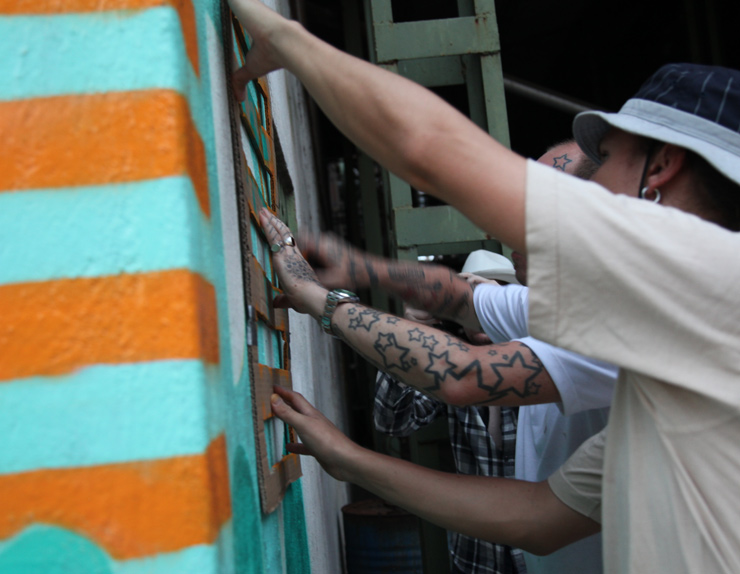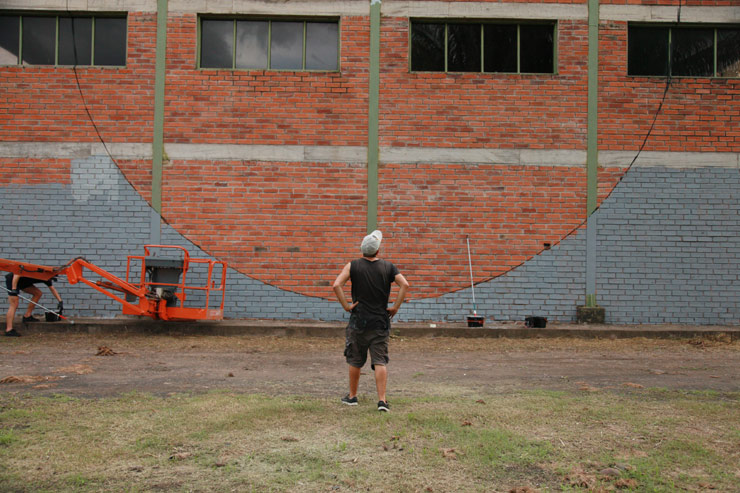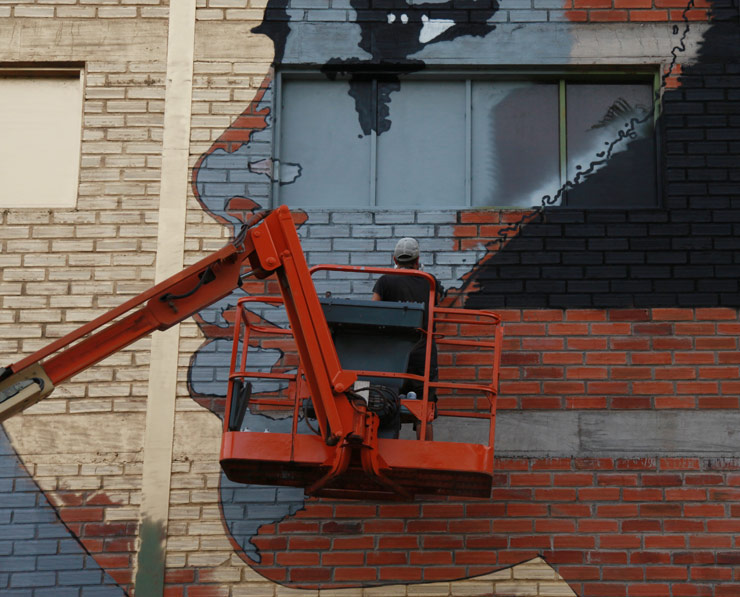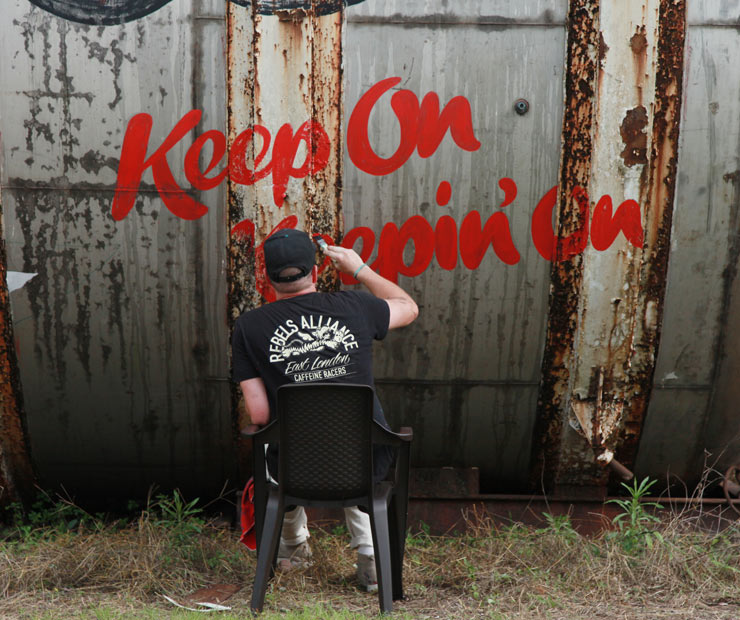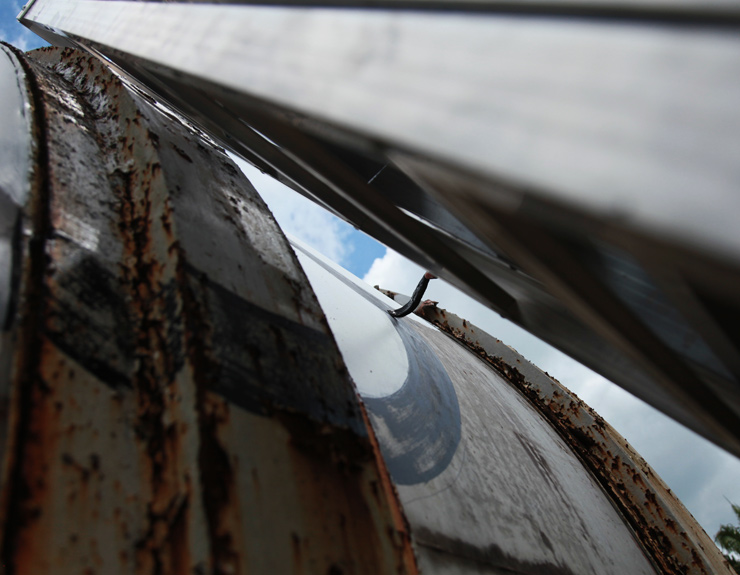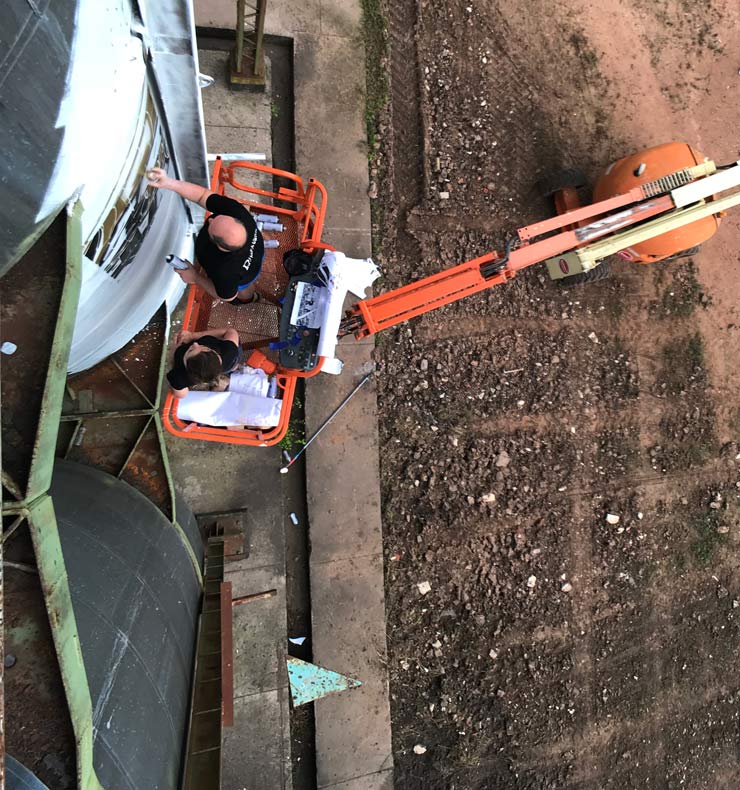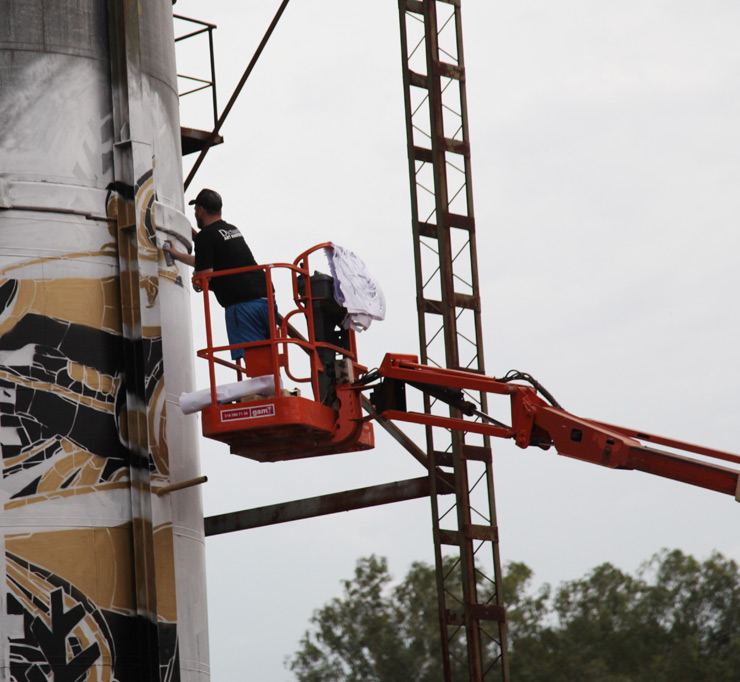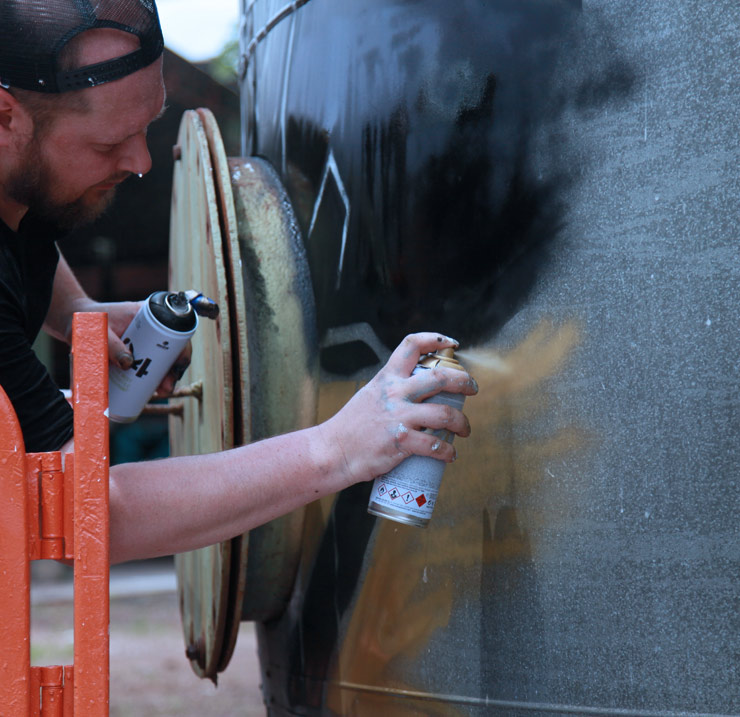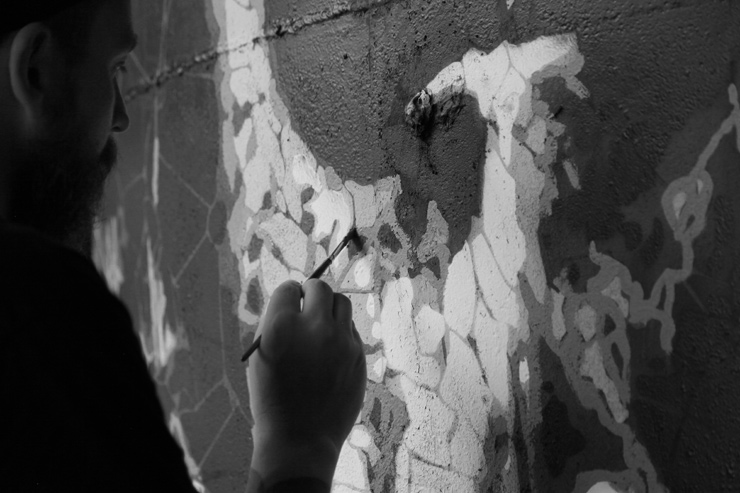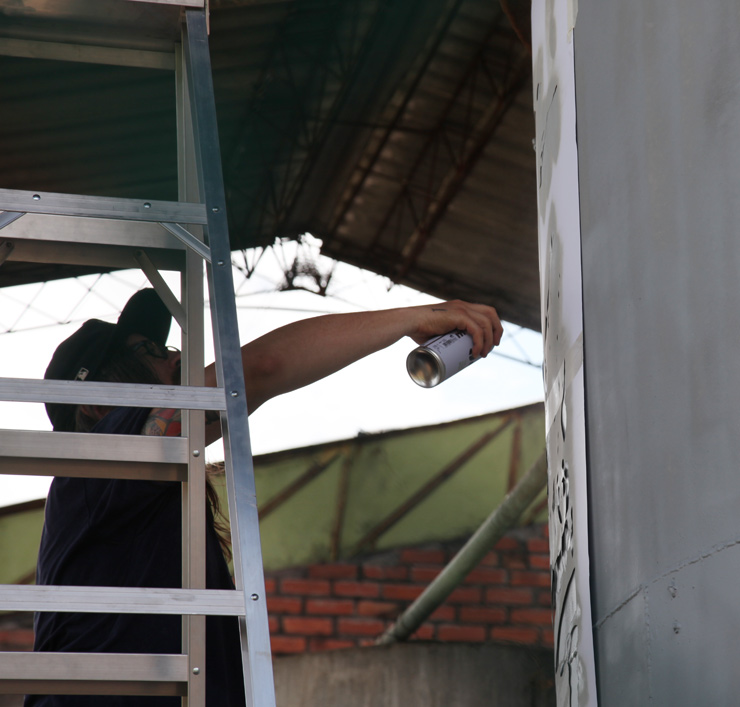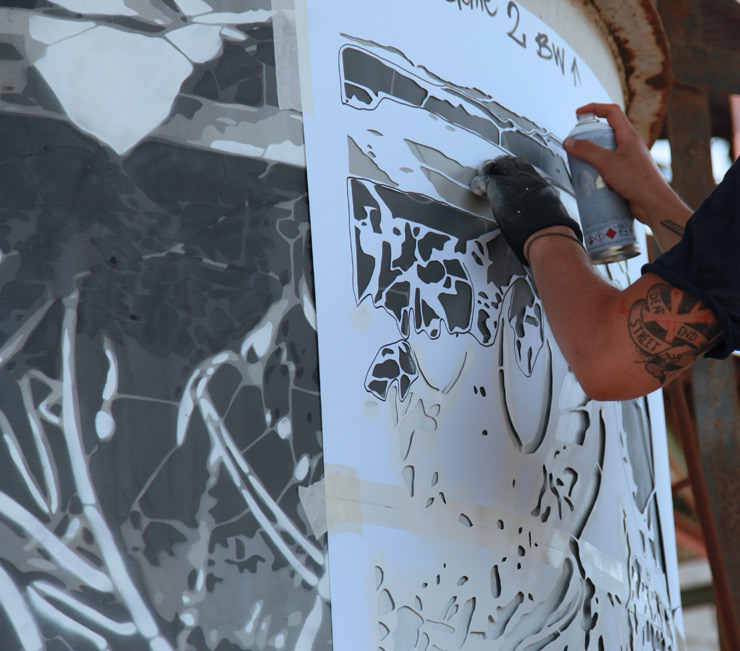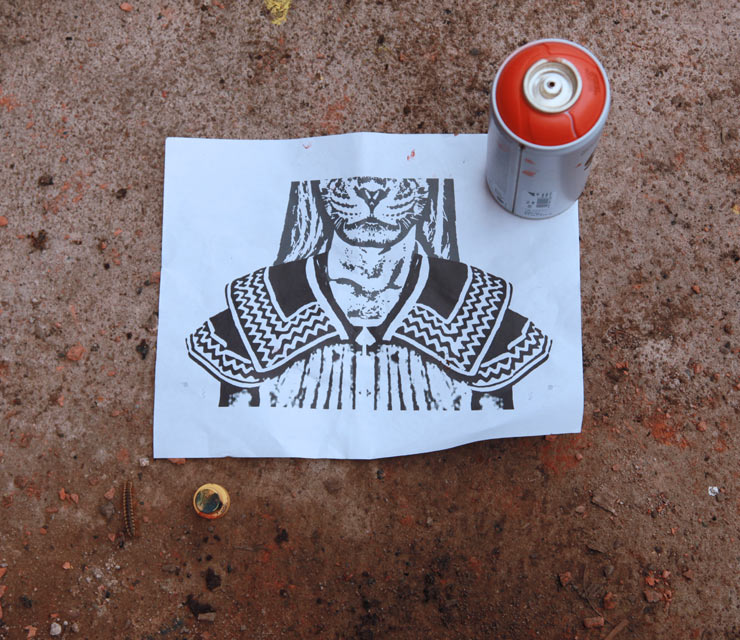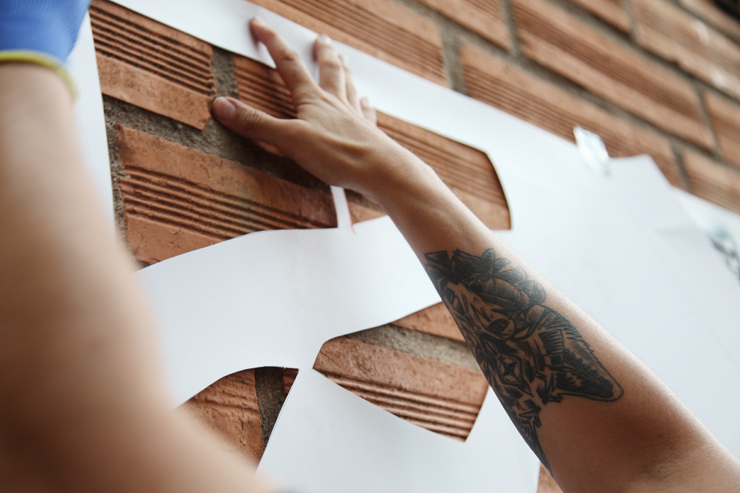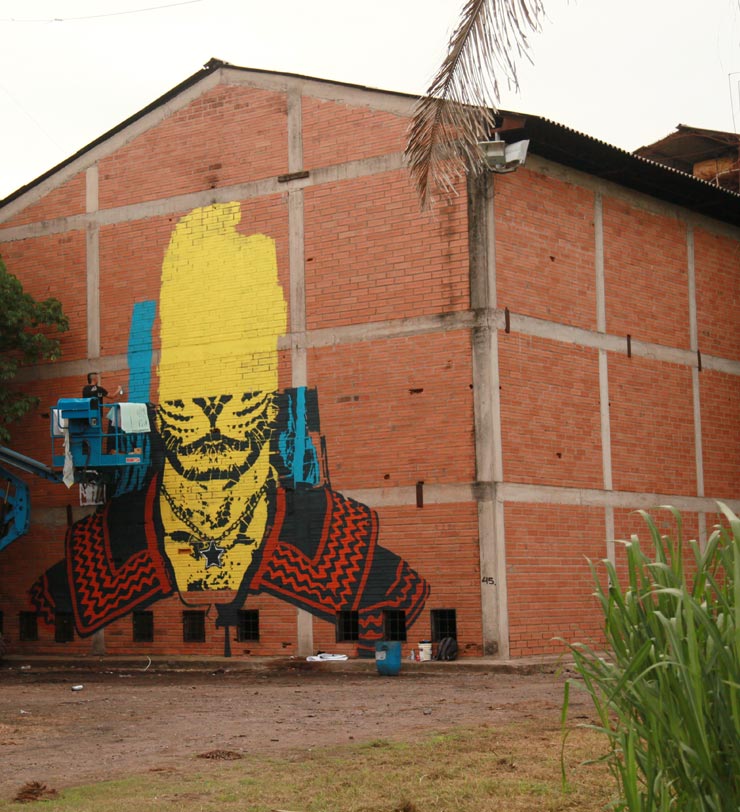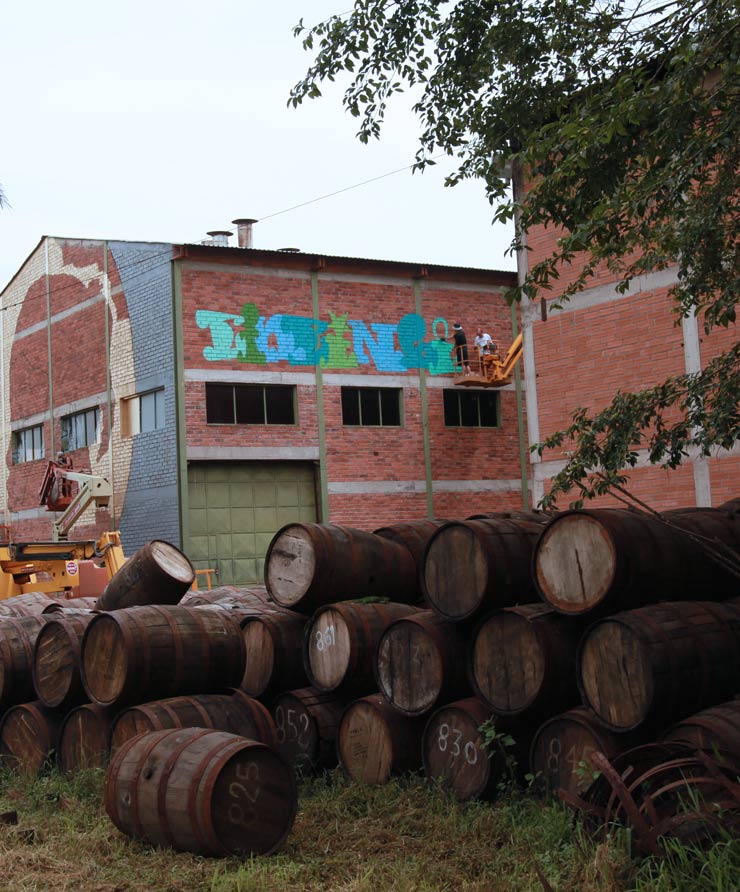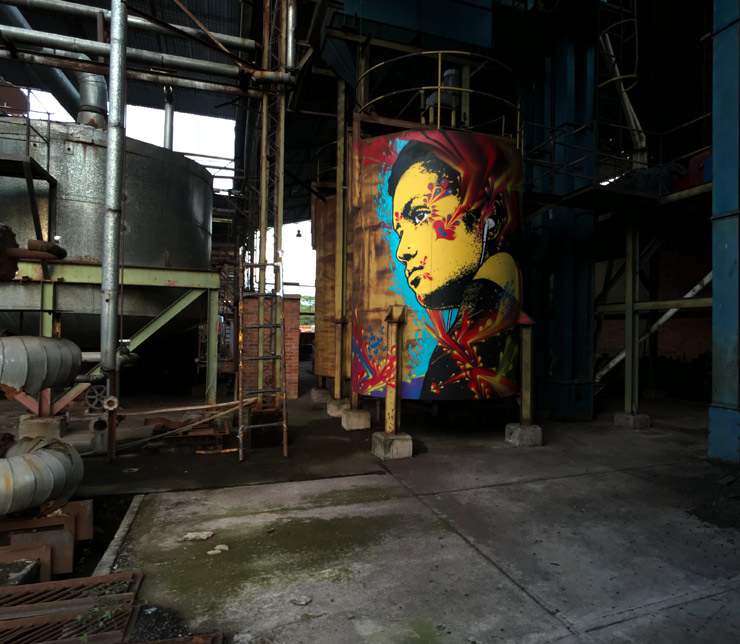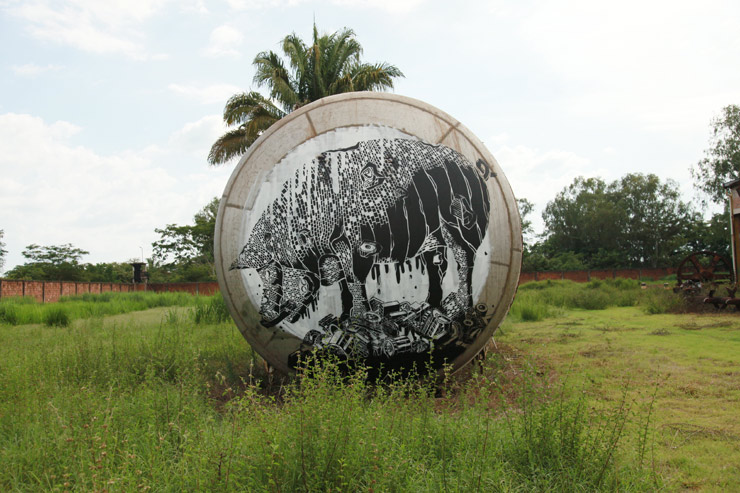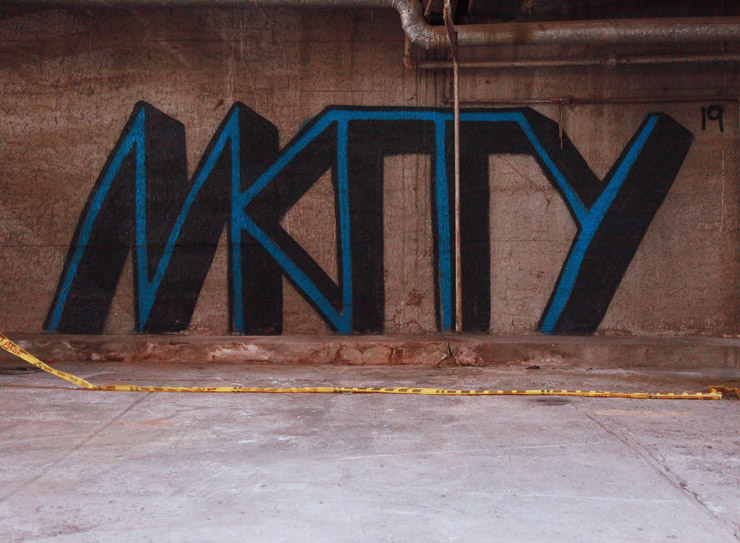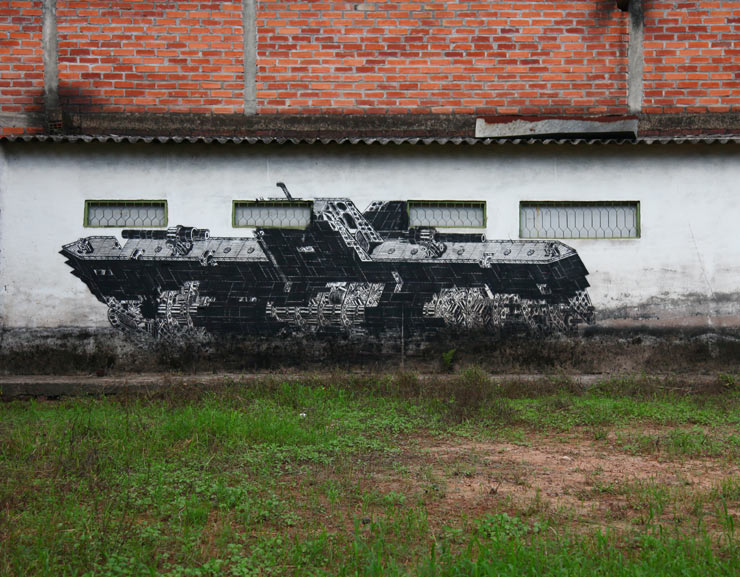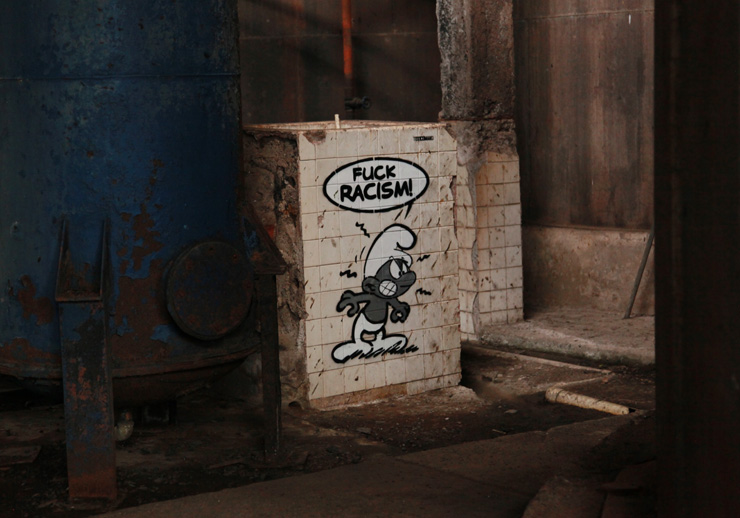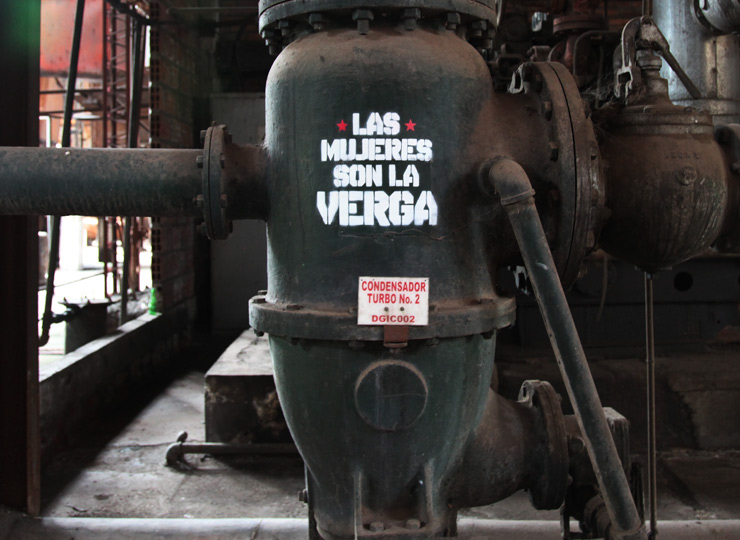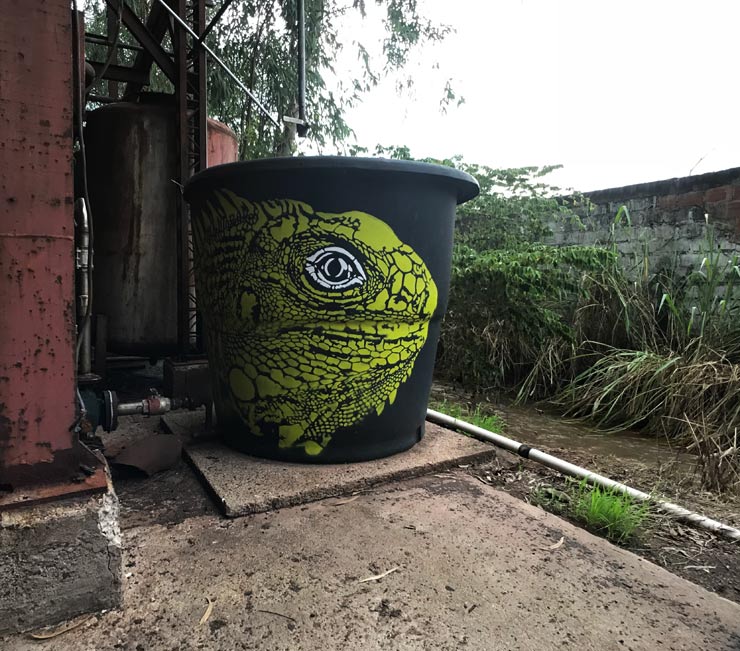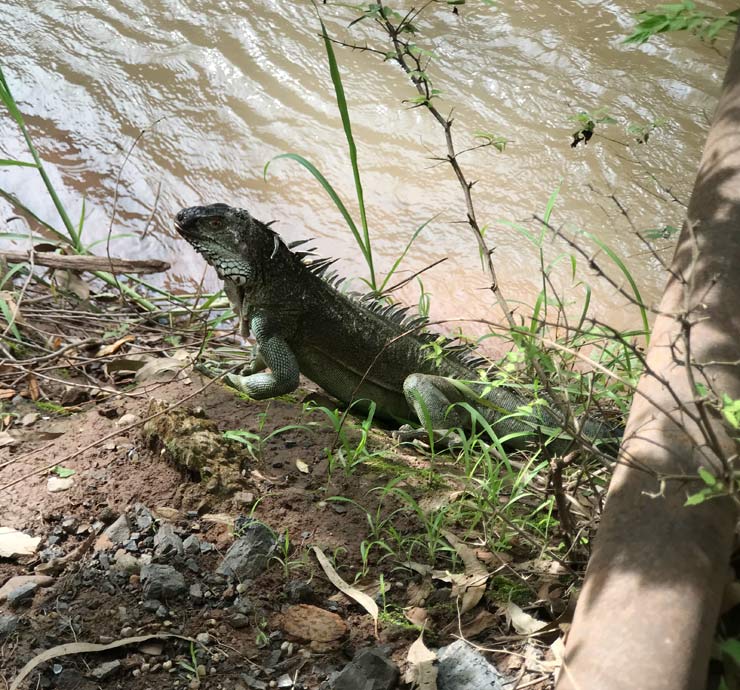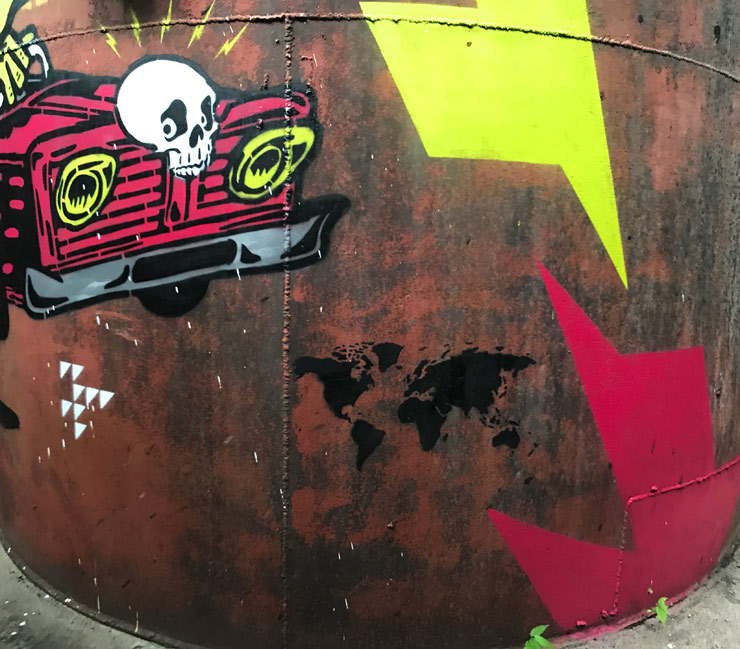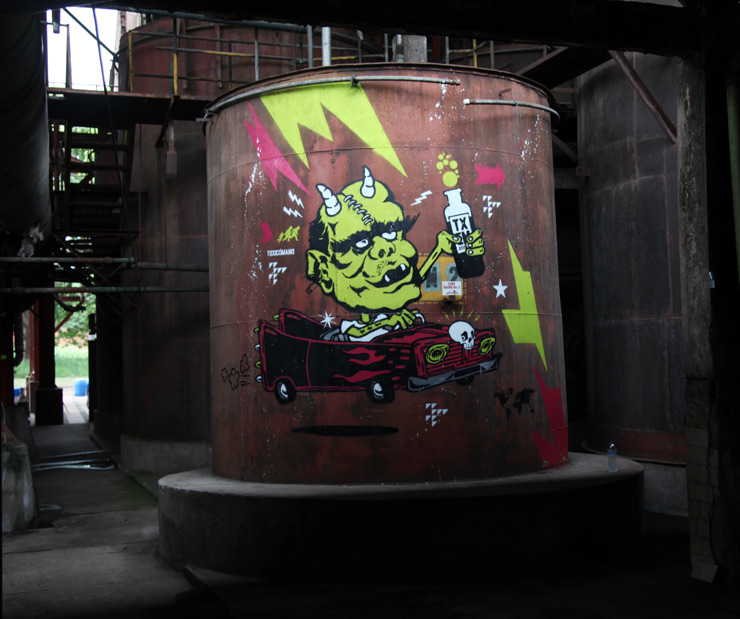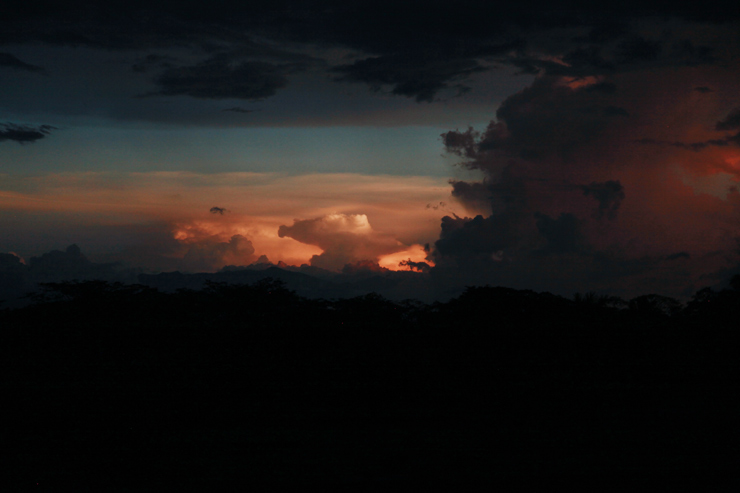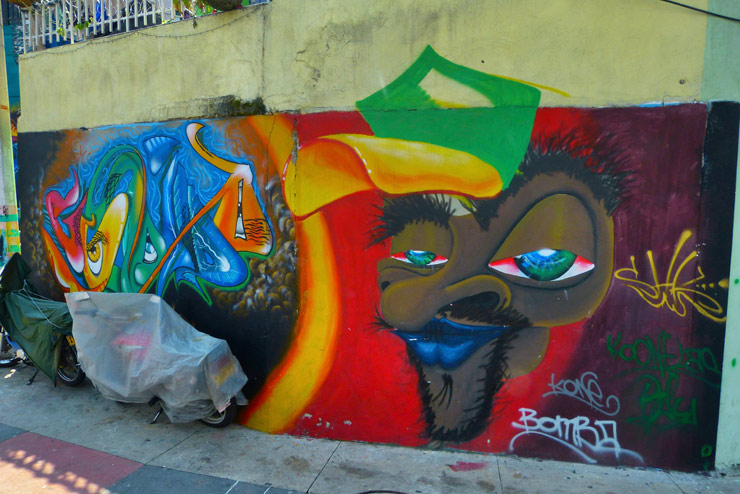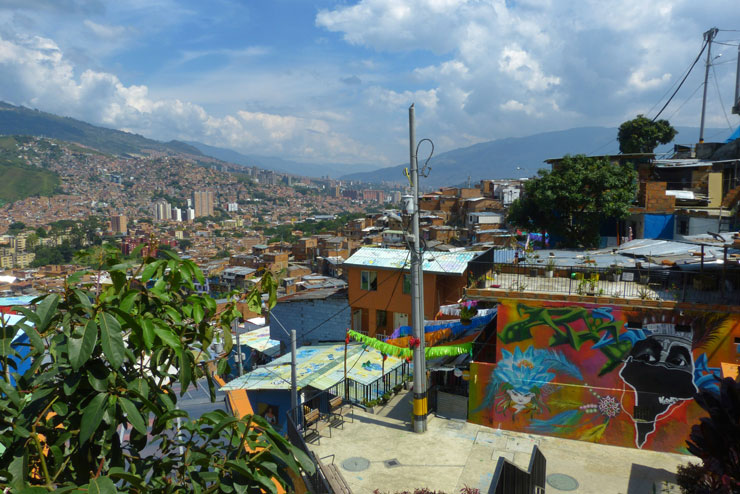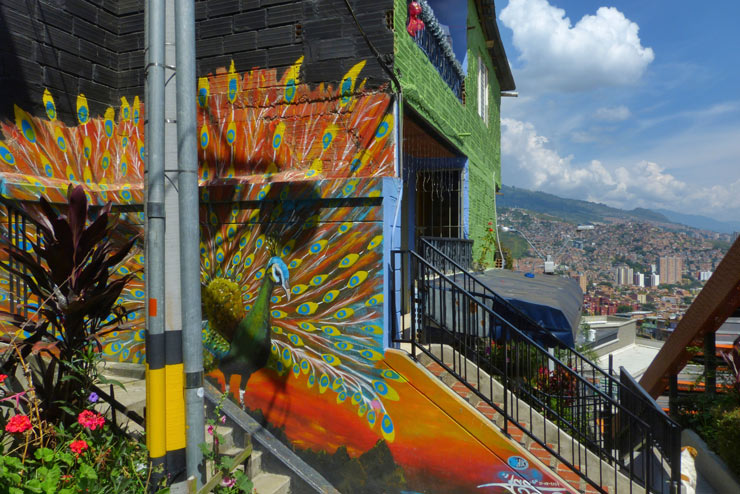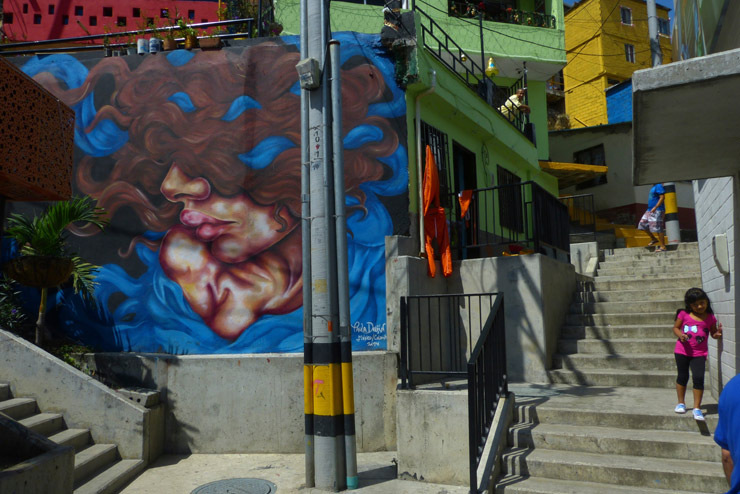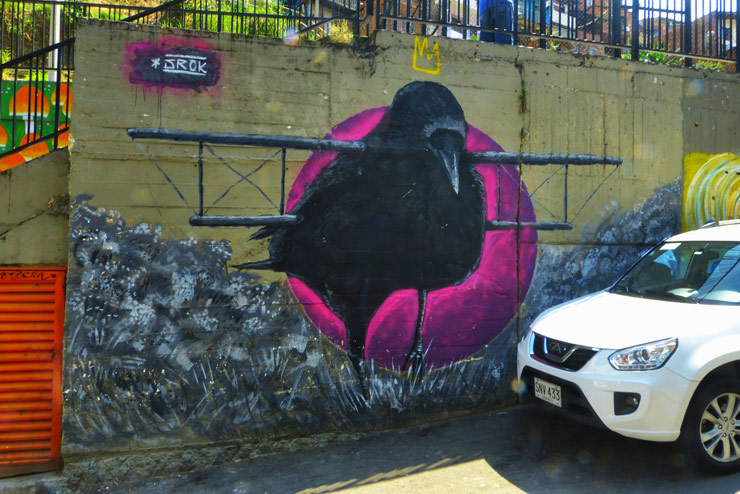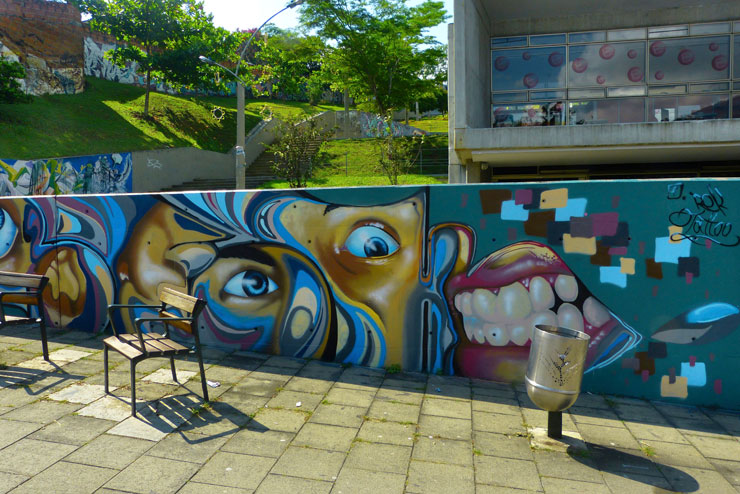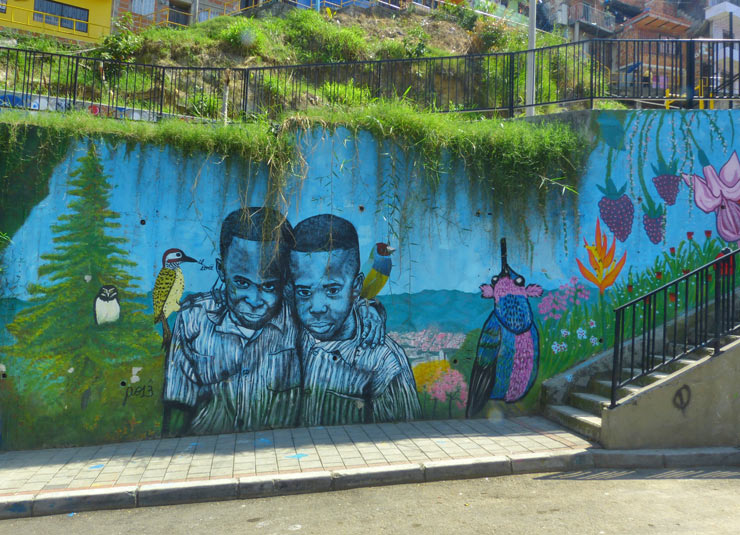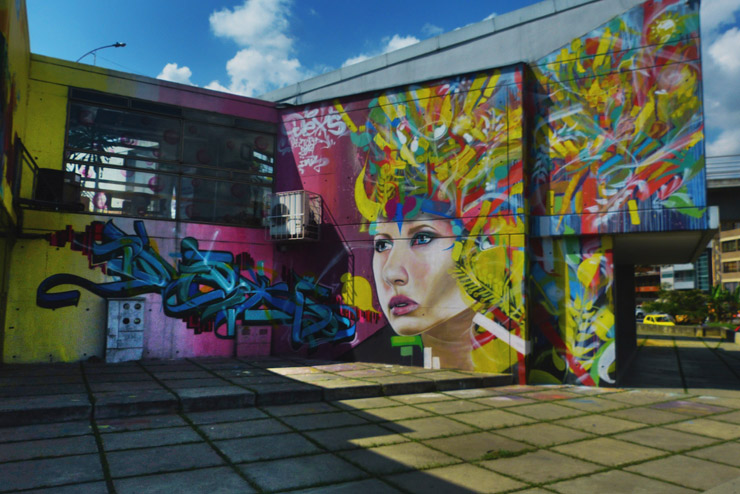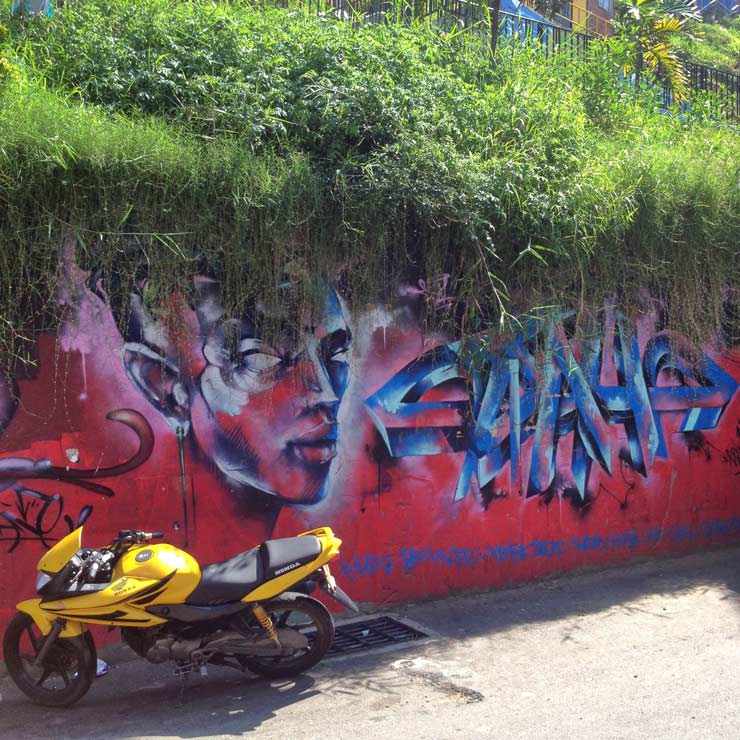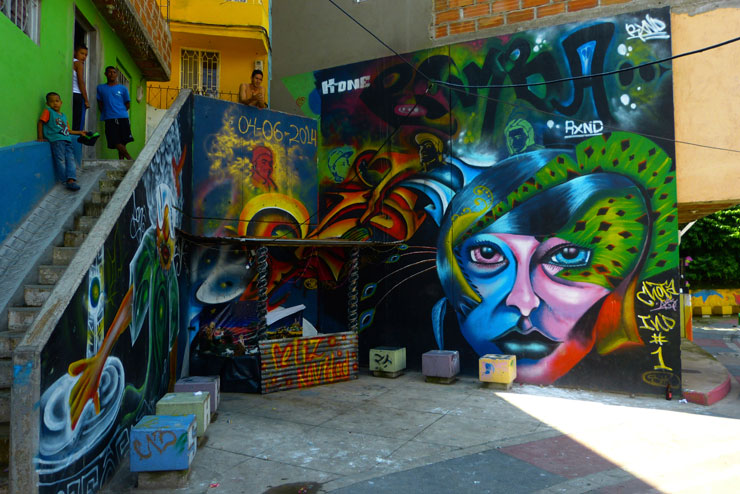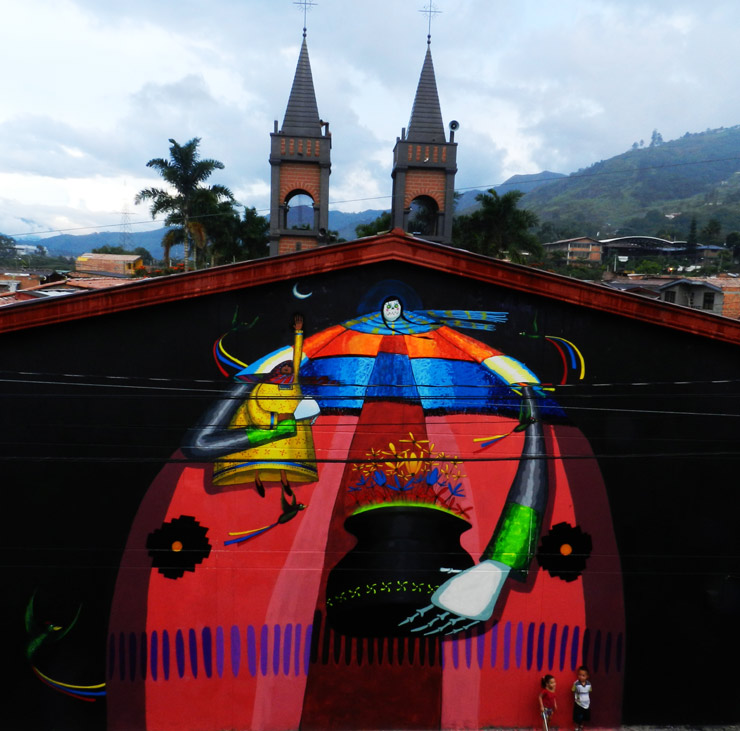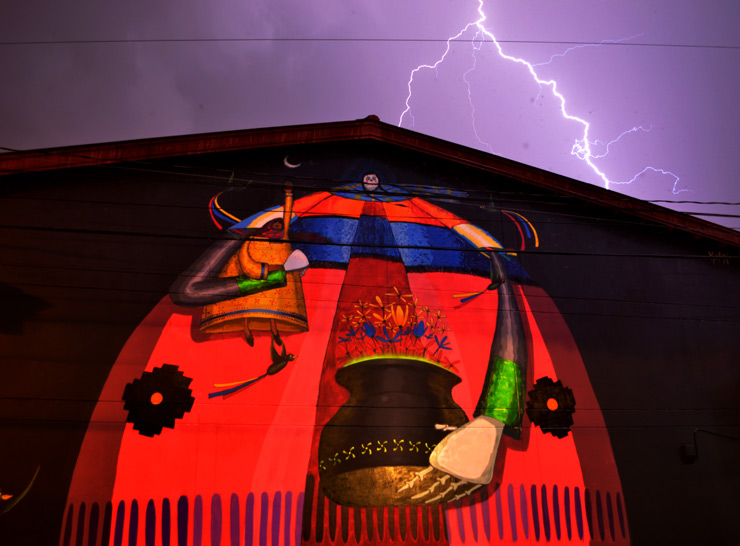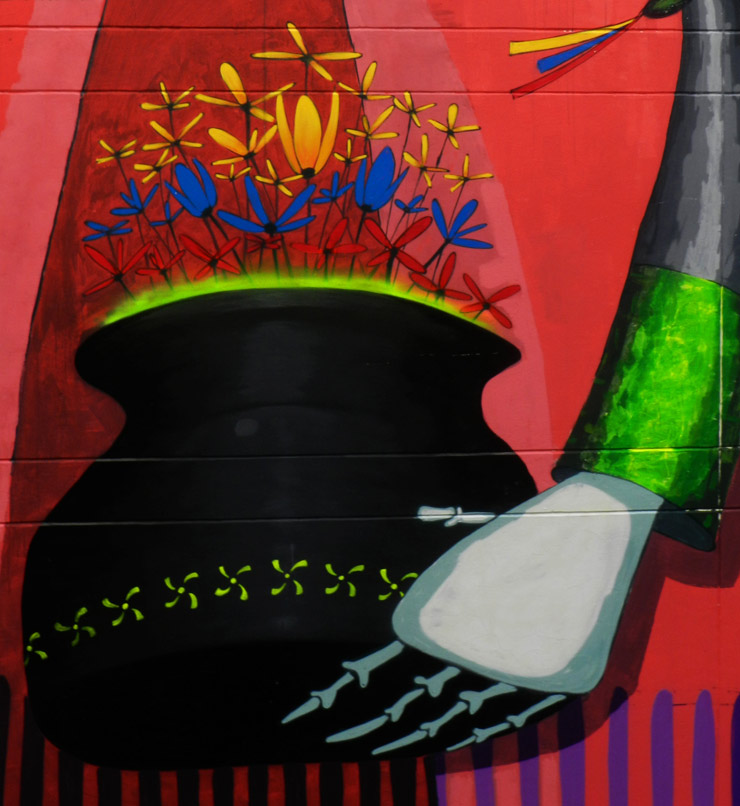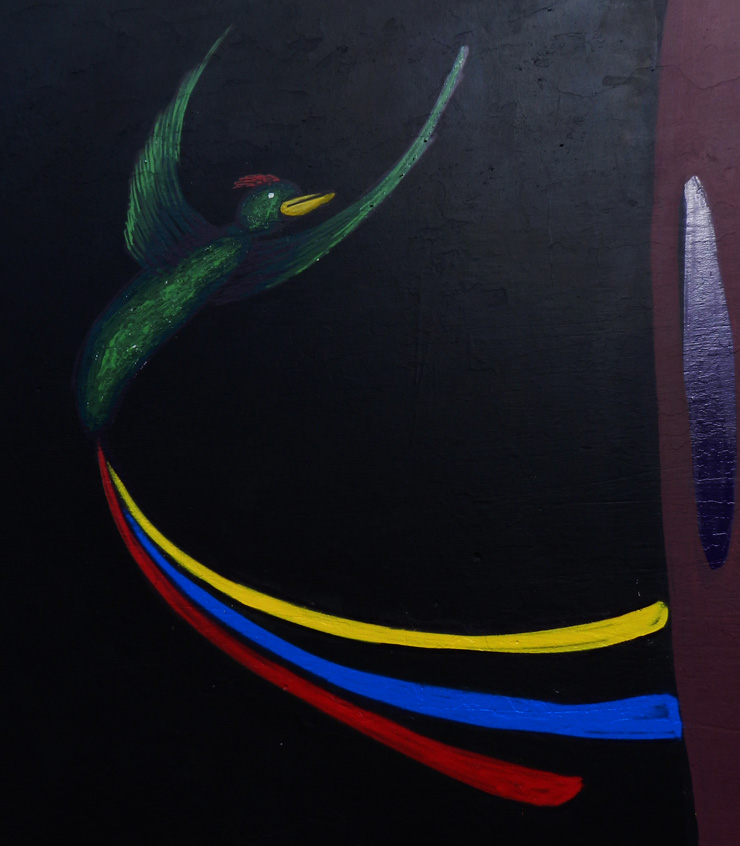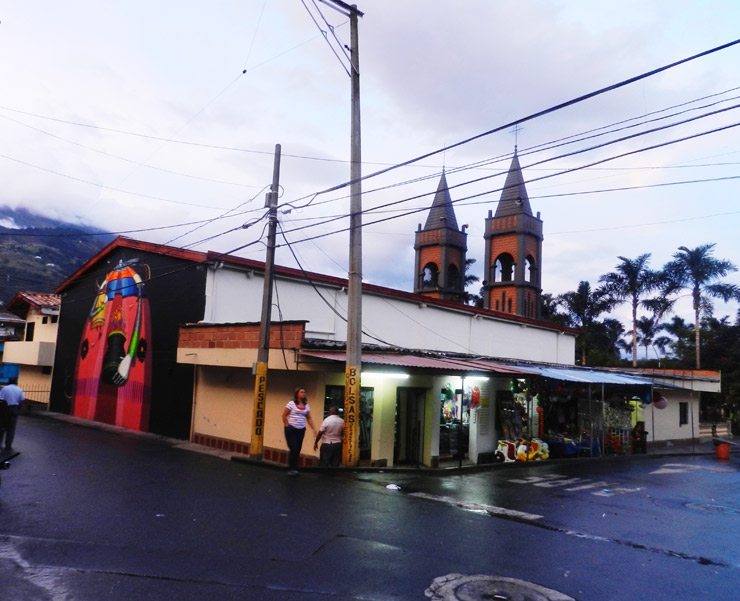Thanks to a globalism of culture, many cities around the world have sprouted vibrant Street Art scenes – including today’s focus, Bogotá, Columbia. Far more open to expression than many cities, Bogotá has become a tolerant and welcoming place for artists on public walls, with the mayor actually agreeing and decreeing that graffiti and street art are a form of valued artistic expression, as long as you lay off the statues and City Hall. The government even gives grants for some painting, and political and social protest on walls goes a little further than you might expect. As part of a personal tour of Columbia in the last couple of months, occasional BSA contributor Yoav Litvin travelled to Bogotá and met a couple of artists who told him about the scene there.
by Yoav Litvin
We arrived at the Bogotá airport in the evening. For convenience sake, we took a cab from the airport to our accommodation in the heart of La Candelaria, an area of town known for its museums, beautiful architecture and street art. I knew Bogotá was going to be as special as far as its street art scene. I just did not know yet how incredible it was going to be.
My introduction to Bogotá street art and graffiti was the highway from the airport into town, aka Calle 26—it was completely BOMBED. When I say bombed I mean there was not a single space free of art on the walls or tunnels of the highway for miles on end. The beautiful graffiti and street art along with countless tags adorning the walls made me feel like a kid in a candy store. Immediately I knew Bogotá was going to be special, a heaven for street art and graffiti.
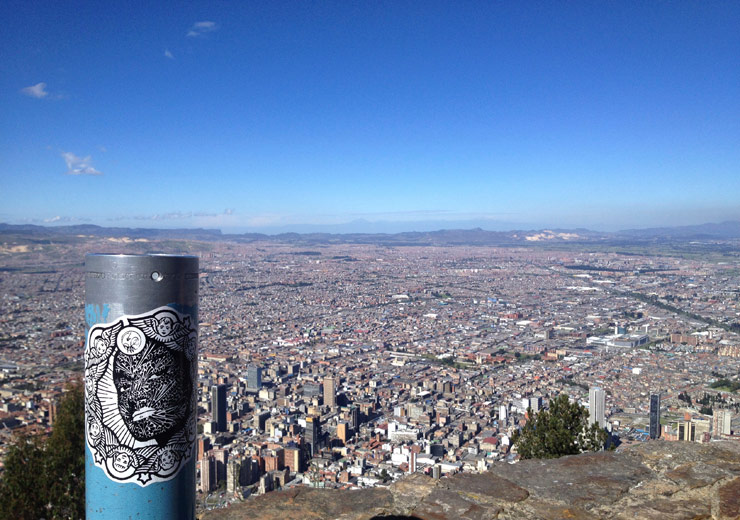
Stink Fish. Bogota, Colombia. (photo © Yoav Litvin)
During my visit I was fortunate to meet two very active local artists: DJ LU (aka Juegasiempre), otherwise known as the “Bogotá Banksy” and CRISP, an Aussie transplant that has made the city his home. They were courteous and answered some of my questions.
Yoav Litvin: What makes the street art and graffiti scene so unique in Bogotá? Please discuss the political background in Bogotá in particular and Colombia in general and some policies (legality etc.) that influence the great diversity of work on the streets. What’s special here?
DJ LU: Bogotá’s treasure is its diversity, in every sense. It has very eclectic architecture, interesting places, and is extremely multiracial. Urban expressions are not the exception; here you can find murals, tagging, hip hop graffiti, paste ups, stickers, characters, lettering and stencil work among others. Bogotá is an ideal playground for public expression. First of all, its urban structure is patchy making it ideally suited as far as context; there are many residual spaces, remnants of highway constructions, parking lots and abandoned structures.
Second, the legislation is tolerant, so unless you are engaged in a very clear act of vandalism you won’t have a problem with the law. Residents are also becoming familiar with the practice so there is tolerance from the local population.

Toxicomano . Unknown . DJ LU . Bogota, Colombia. (photo © Yoav Litvin)
CRISP: Bogotá is one of the most exciting, underrated and prolific urban art scenes on the planet. This is due to a combination of several factors, which have created a melting pot of creativity and expression. Firstly, there is a long history of civil unrest, inequality and injustices in Colombia that make street art and graffiti a potent form of expression and protest for the people.
It actually has the longest running civil war in the world, over half a century of bloodshed!
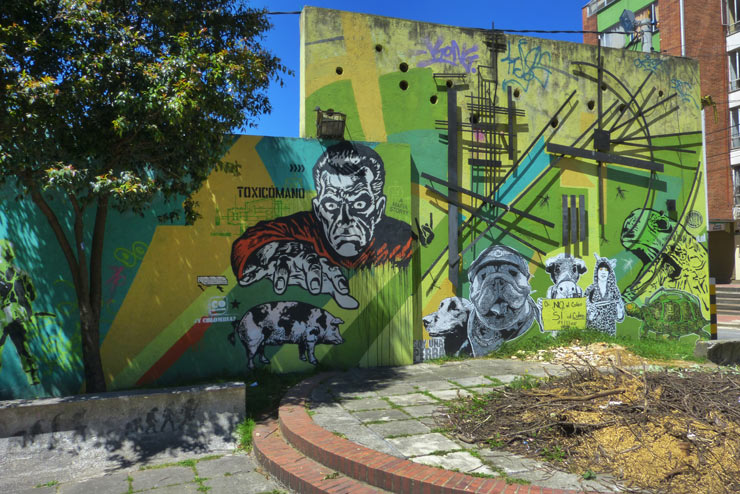
Toxicomano . DJ LU . Lesivo . Bogota, Colombia. (photo © Yoav Litvin)
Secondly, it has a very tolerant legal approach to urban art compared to most other cities in the world. It’s not technically illegal but “prohibited”, which provides a unique situation where grafiteros can take their time and paint in broad daylight. That said, an artist still needs to be cautious of police depending on the type of street art you are doing and due to police history of brutality.
Thirdly, Colombia has a rich resource of inspiration: its people, music, food, indigenous cultures, animals and plants from the Pacific, Andes, Amazon and Caribbean! This complex mix of factors makes Bogotá’s urban art scene truly unique.
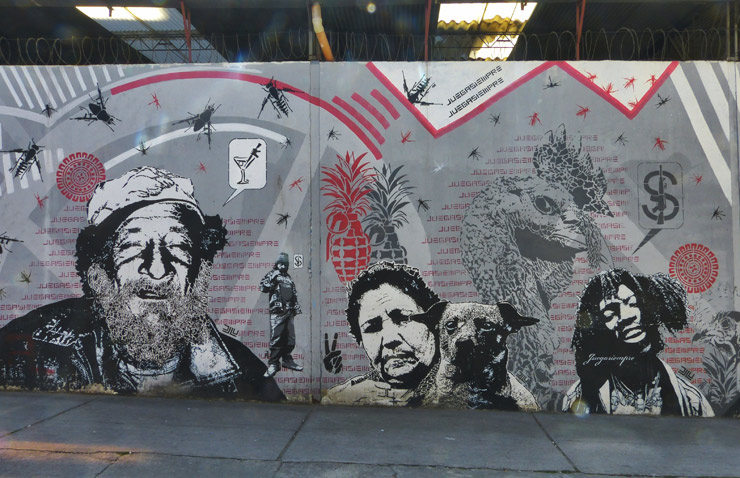
DJ LU Bogota, Colombia. (photo © Yoav Litvin)
Yoav Litvin: What motivates you in your work? Please discuss how your work is an expression of your development within the scene in Bogota.
DJ LU: My work is motivated by reality. I’m interested in making people aware–through art–of lots of situations that affect us as a society. The first project I started with on the street is the Pictogram project. It is based on semiotics and sign language. As it proposes very simple designs it is intended to relay a message immediately. In this project I have designed more than 60 pictograms that I have put up all over Bogotá and many other cities around the world in stencil form, stickers and paste ups.
Afterwards came the Street Pride project in which I took photographs of anonymous people whose appearance I found aesthetically interesting and who were interacting with the public space and I used them as models for my work. I believe that advertisements and the media in general are fabricating idols for the people to follow and to speed up consumerism. I want to make the invisible visible, to bring attention to anonymous people who construct our street culture.
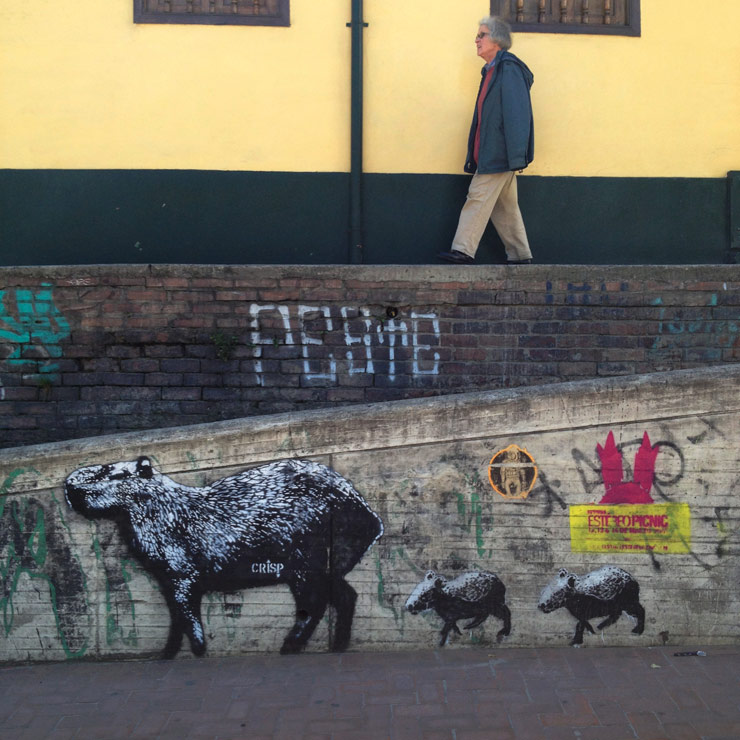
Crisp. Bogota, Colombia. (photo © Yoav Litvin)
CRISP: I’ve always expressed myself through art from a very young age. In terms of street art I was a late bloomer. Despite an interest and curiosity in urban art, It was only when I came to Bogota that I truly became a street artist! I met grafitero friends here who encouraged me to put my artwork up in the street. Street art has shown me that it’s important that our public spaces aren’t controlled and dictated solely by councils, corporations, marketing companies, and formal art institutes.

Toxicomano. Bogota, Colombia. (photo © Yoav Litvin)
Yoav Litvin: How do you see the future of street art and graffiti in Bogota?
DJ LU: I believe that the progress of street art and graffiti is determined by a lot of factors: legal issues, trends, politics and economics. Graffiti and street art are trendy now in Bogotá, and this will most likely decrease. At that point only the ones that are doing it for real will keep working outside.
CRISP: The huge changes I’ve witnessed since 2001 through 2008 until the present are phenomenal. Bogota’s urban art has exploded in terms of quality and quantity. Everywhere you look, walk and drive, you see some form of creativity and expression on nearly every block in the city!
Mostly it is grass roots, passion-driven and totally devoid of the more corporate, council and gallery-organized and funded “street art” you see in many other cities in the world. In the near future I see many talented Colombian artists finally getting the recognition, support and ability to share their work with a wider international audience they deserve. Ironically this point isn’t important to many grafiteros here.
It’s the way of life, the friends, the culture, pure expression, fun, connecting with the public and the happiness this connection with the street brings that’s most important! In the future Bogota will be known as an urban art mecca but for all the right reasons!
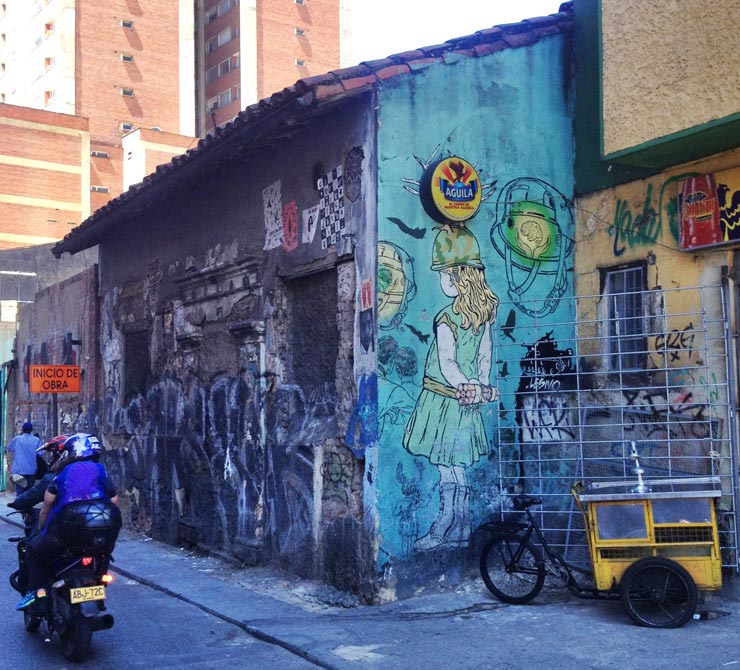
Lesivo. Bogota, Colombia. (photo © Yoav Litvin)
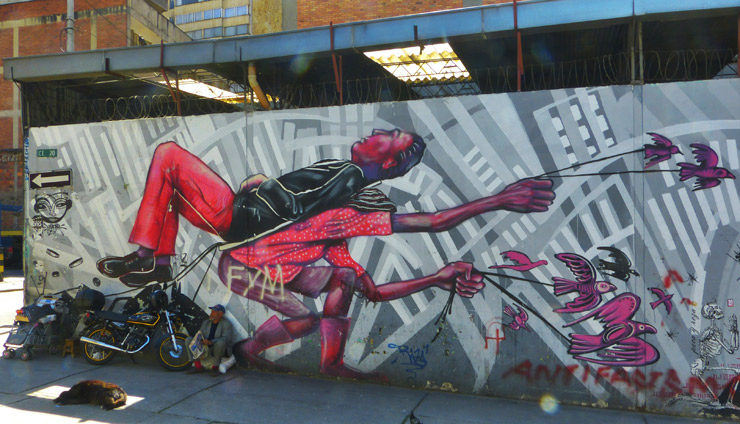
Guache. Bogota, Colombia. (photo © Yoav Litvin)
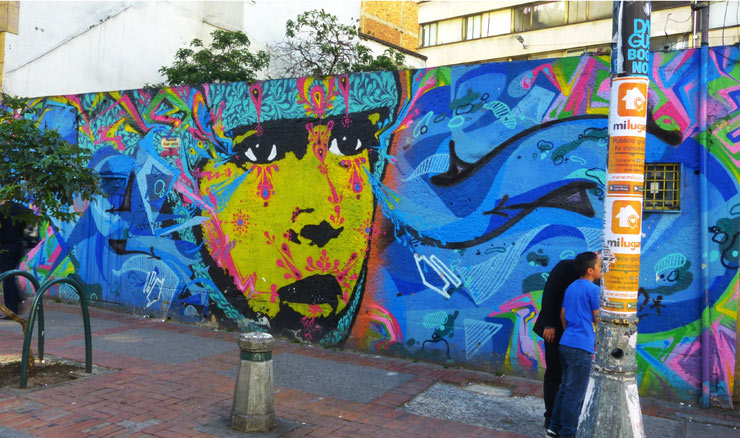
Stinkfish. Bogota, Colombia. (photo © Yoav Litvin)
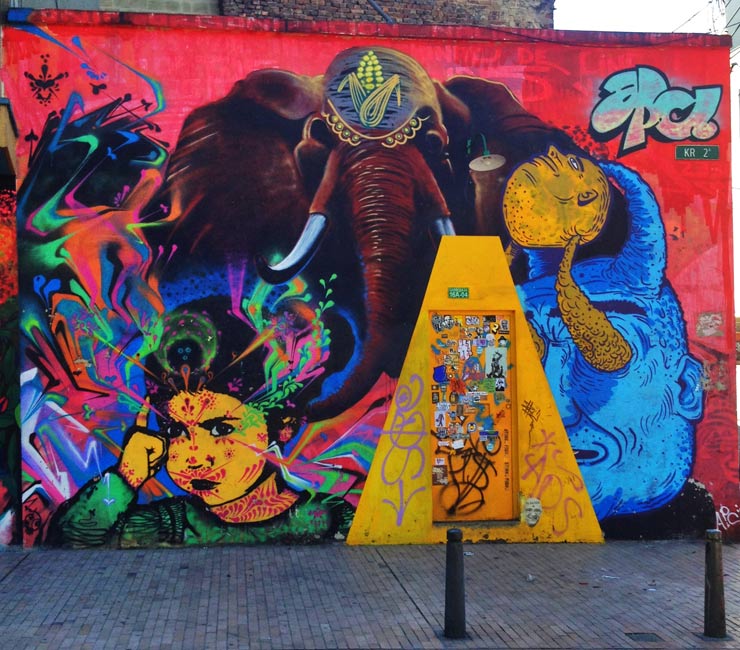
APC . Stinkfish . FCO . Temor. Bogota, Colombia. (photo © Yoav Litvin)
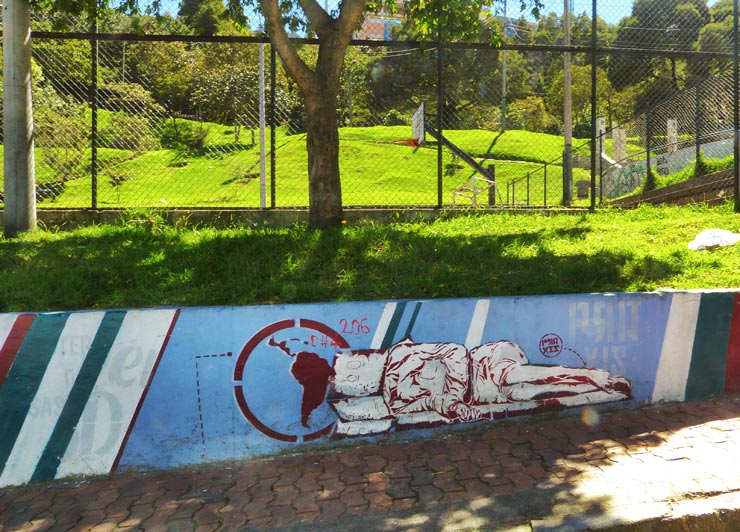
Praxis. Bogota, Colombia. (photo © Yoav Litvin)
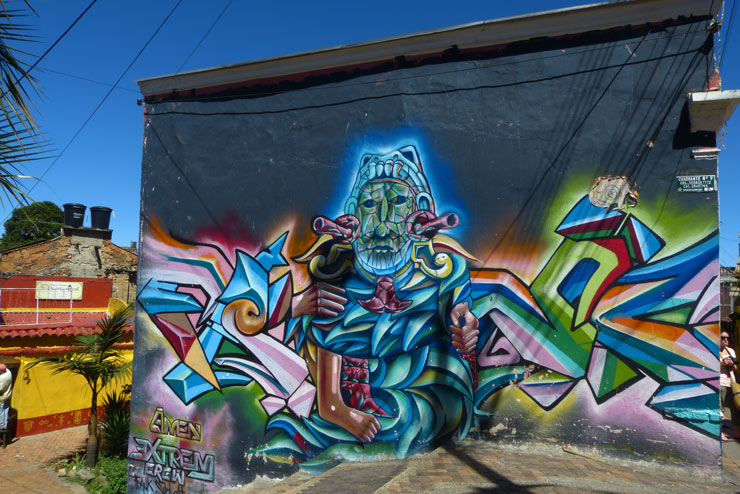
Frank Salvador . Sur Beat. Bogota, Colombia. (photo © Yoav Litvin)
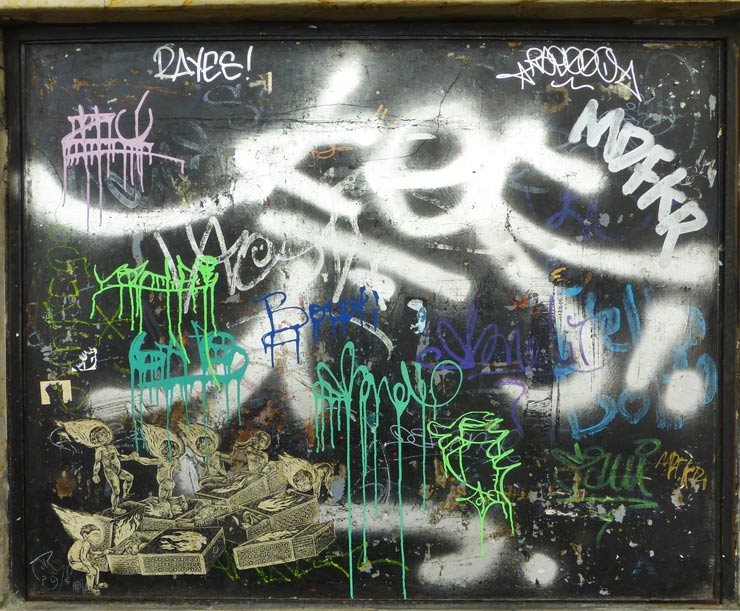
Bastardilla wheatpaste afloat beneath a handful of dripping tags. Bogota, Colombia. (photo © Yoav Litvin)
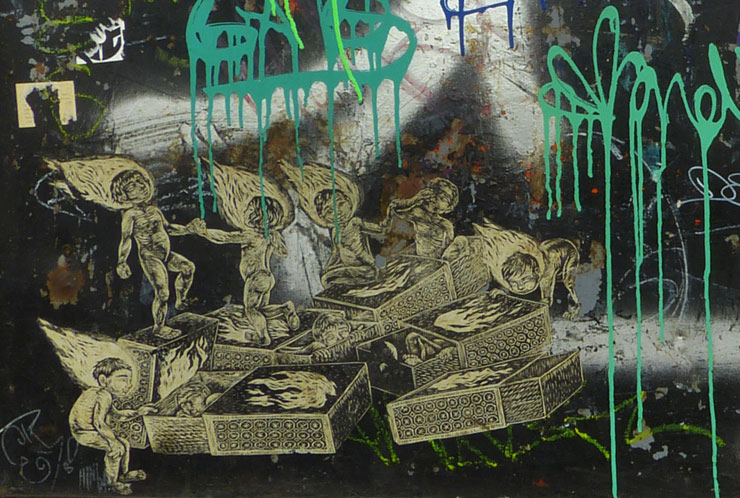
Bastardilla. Detail. Bogota, Colombia. (photo © Yoav Litvin)
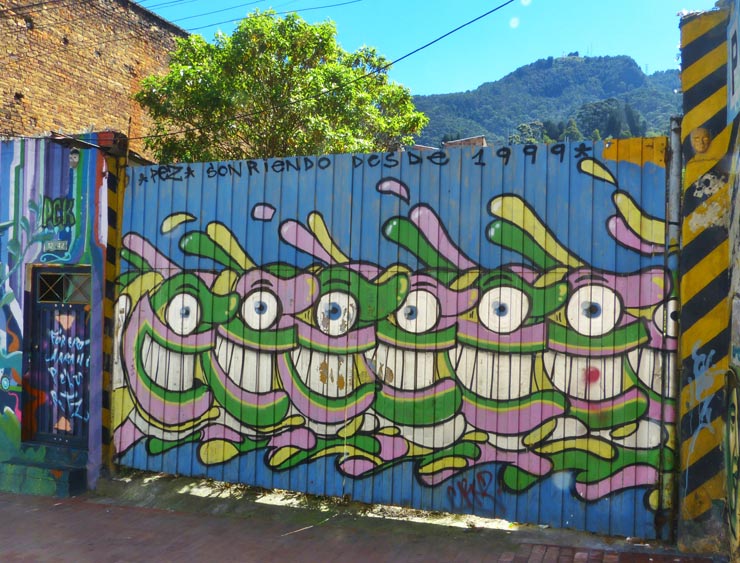
El Pez. Bogota, Colombia. (photo © Yoav Litvin)
<<>>><><<>BSA<<>>><<<>><><BSA<<>>><><<>BSA<<>>><<<>><><BSA
Please note: All content including images and text are © BrooklynStreetArt.com, unless otherwise noted. We like sharing BSA content for non-commercial purposes as long as you credit the photographer(s) and BSA, include a link to the original article URL and do not remove the photographer’s name from the .jpg file. Otherwise, please refrain from re-posting. Thanks!
<<>>><><<>BSA<<>>><<<>><><BSA<<>>><><<>BSA<<>>><<<>><><BSA
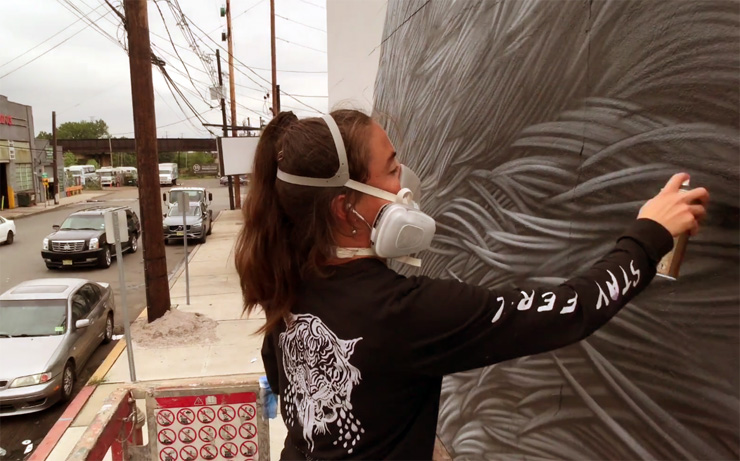
 BROOKLYN STREET ART LOVES YOU MORE EVERY DAY
BROOKLYN STREET ART LOVES YOU MORE EVERY DAY


